Fiji
Reflecting on four months sailing through a beautiful country of friendly people
Our time in Fiji is drawing to a close. We are enjoying our last few weeks here while getting Roam ready for her passage to New Zealand. Pam has been stocking us up and managing the bureaucratic paper chase before she heads back to the US. My friends Dave and Richard will fly in, and together the three of us will sail to NZ in mid-October.
I am trying to soak up every day. There is a tendency to get complacent with this lifestyle—the locals, fellow cruisers, beautiful vistas, amazing diving. “Hedonic adaptation.” That’s the term for it. Or the cognitive bias, anyway.
Hedonic Adaptation
Hedonic adaptation1 suggests you have a baseline level of happiness and contentment. No matter how amazing your new experience, over time you regress back to your baseline. You go on vacation. It’s beautiful. You are delighted. By the second week, the amazing sunsets aren’t that amazing anymore. I’m fighting that. I don’t want to forget how great this is.
Circumnavigating Fiji
Fiji’s 332 islands are spread out over an area the size of Alaska. We circumnavigated most of the country over the last four months. It’s been an experience in contrasts: the luxury of Nawi, the remoteness of the Lau Group, spectacular diving in Kadavu, rain along the Coral Coast, the bustle of Nadi, Vuda, and Port Denarau on Viti Levu, the cruiser haven of the Mamanuca, and the breezy isolation of the Yasawa.
Friendly people are the consistent theme. Fijians are truly happy to have us as visitors. The visiting “yachties2” are mostly Australians and New Zealanders, along with some North Americans and Europeans. Blended together, it’s an easygoing vibe—especially when compared to the pace of things back in California.
Fijians are gifted singers. Arriving to a new place? They are out singing the welcome song. Leaving? They gather to sing the farewell song. Birthday? You get all three verses sung by the entire staff (you didn’t even know there were three verses to Happy Birthday). How great would your work be if several times a day everyone stopped and sang a song.
Sevusevu
When we arrive on a remote island, we dress up and go visit the chief of the village. We bring a ceremonial gift—sevusevu—a bundle of kava roots we buy in the markets. The head man of the village greets us, briefs us on the protocol with the chief, and then accompanies us. Remove your hat and sunglasses. Cover your knees. Don’t clap during the blessing (they clap, you don’t).
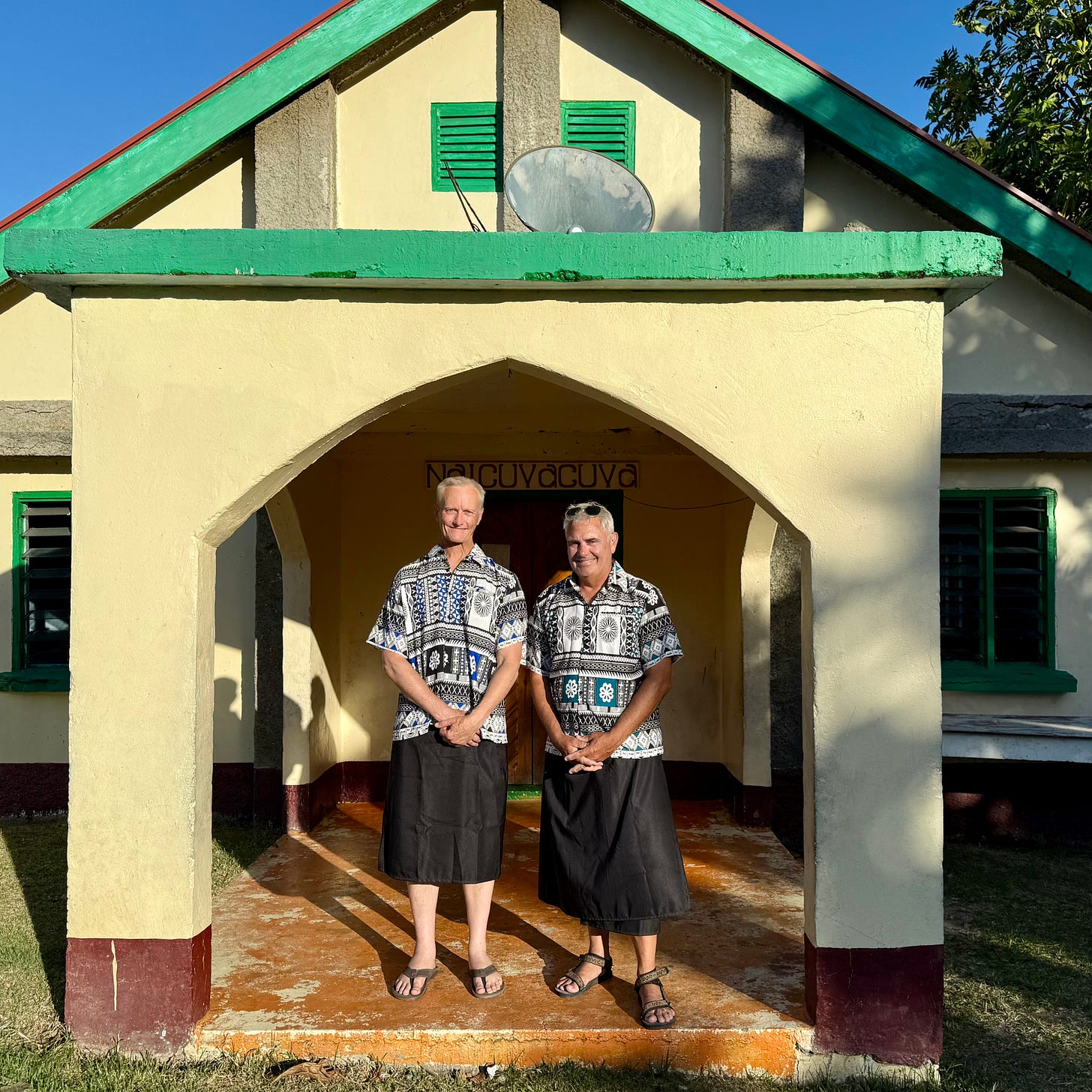
The chief blesses us and our boat and gives us permission to visit the island, the village, and the lagoon (fish, dive, paddleboard, wingfoil). It’s a wonderful tradition. Sometimes we stay for a kava ceremony where the kava roots are pounded into a powder, mixed with water, and drunk from a community bowl. It will give you numb lips and a snoozy, relaxed feeling.
Sometimes the chief will explain the village construction priorities (clinic, school, breakwater, road) and ask for a donation. It’s always very unassuming and low-key. And we are always happy to donate.
Often the chief will entertain questions. I like to ask them what they worry about. For many of them, their main concern is drug trafficking and all that comes with it. But always, it’s the welfare of their village.
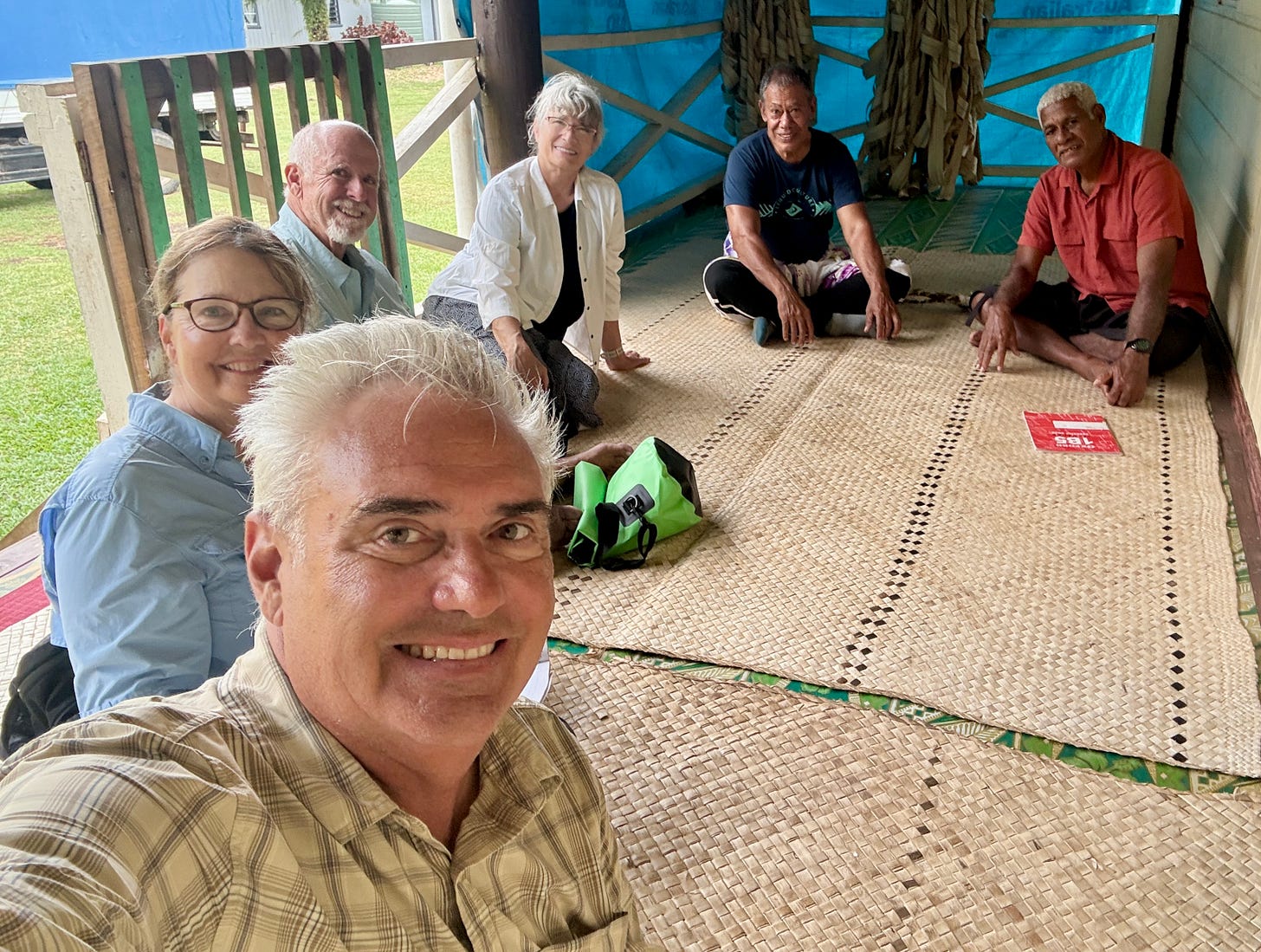
Vulaga
On the island of Vulaga, in the far southeast corner of Fiji, the chief assigns every visiting yacht a host family. Lani and Miji, our hosts, looked after us during our stay. They accompanied us to church and hosted a feast for us and several other crews and their host families. Their grandkids guided us on a hike around the island. It’s a wonderful practice, and it makes Vulaga a popular destination.
We reciprocate by giving them food, clothes, and boat gear we don’t need. And we buy the wood carvings they make for us. One day, we stopped by to find them drinking the Starbucks coffee we gave them along with their fresh coconut donuts. I hear you judging me. Starbucks instant? Really? That’s the impression of Americans you gave them? Yes! They loved it!
Island Life
It’s hard for Westerners to grasp the appeal of island life. It is quite primitive by our suburban standards. Talking to Miji about it, he was living in Suva and not fully loving city life. The COVID lockdown was the inflection point for him. It was too hard to get food or do anything. He rounded up the family and moved back to Vulaga and a simpler life. “You have your friends and family. You go out and catch and gather food for the day. It’s all you need.” Life is good.
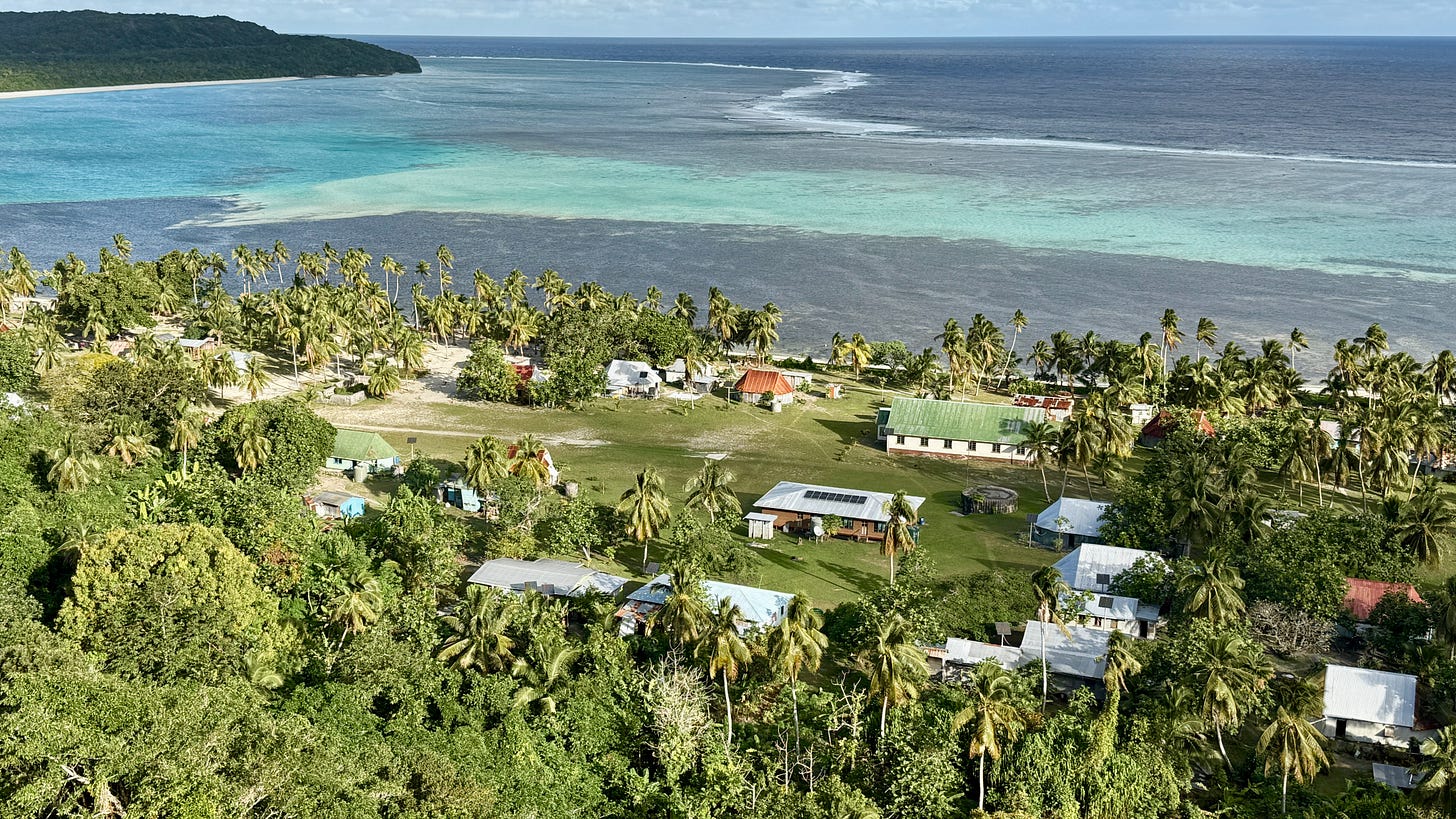
Viti Levu
Viti Levu is the main island of Fiji. Home to Suva, Nadi, Port Denarau, and Vuda. It took several days to get from the far corner of the Southern Lau group up to Viti Levu. We stopped at the island of Ono partway across in order to rest and to dive on the famous Astrolabe Reef.
Moving on, our passage along the southern “Coral Coast” of Viti Levu allowed us to stop each night. The weather was overcast and rainy, so we didn’t visit ashore very much. The sailing was great. Downwind in mild seas. The ability to stop each night minimizes fatigue. Going in and out of poorly charted anchorages increases risk. There are always trade-offs.
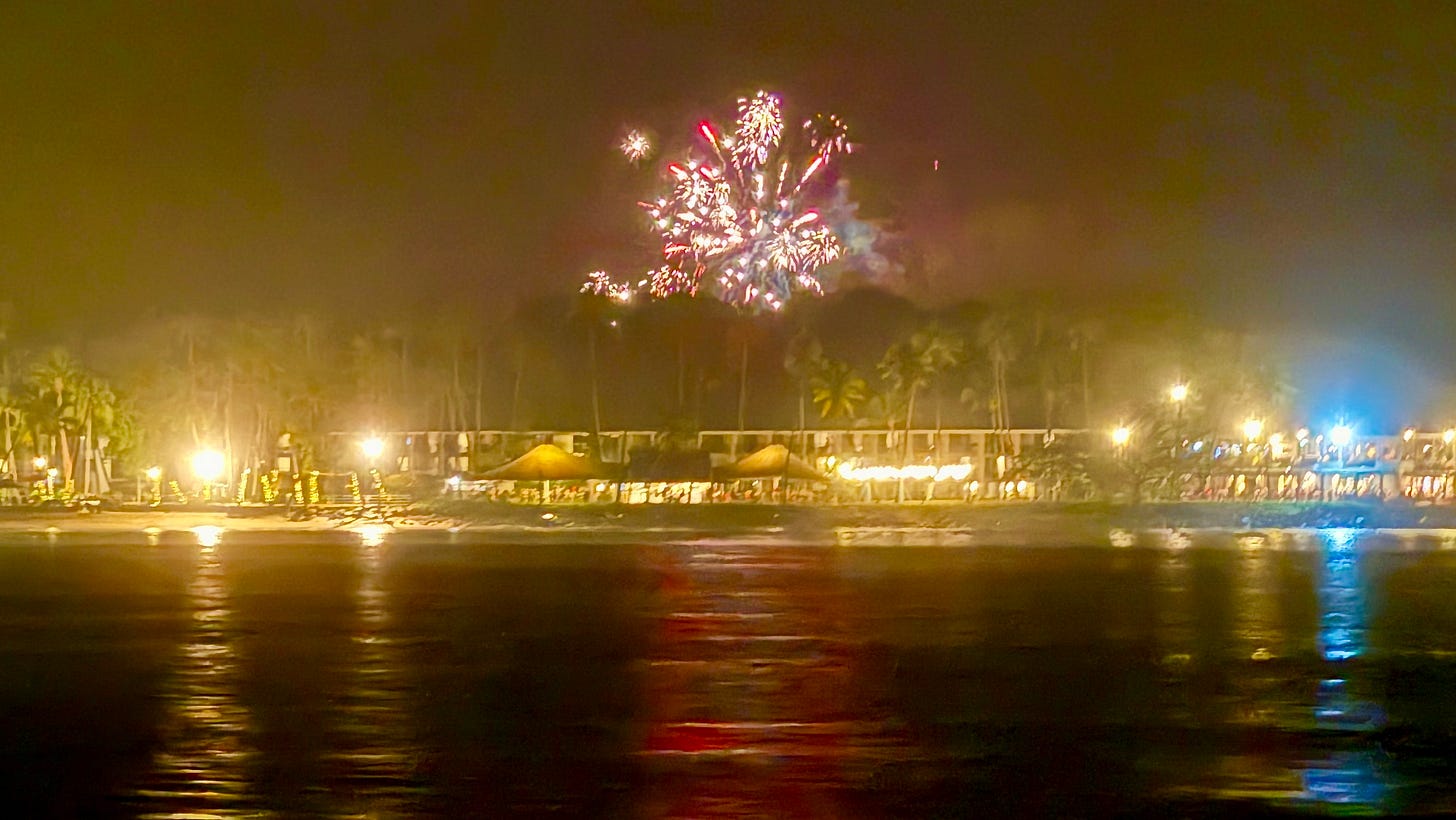
Viti Levu gave us access to marinas, moorings and civilization again. We could get parts, fix things we broke, wash the boat, eat out, and grocery shop. It also allowed us to leave the boat for a few work-related trips to Australia and New Zealand. Pam enjoyed time in Sydney and her first visit to New Zealand.
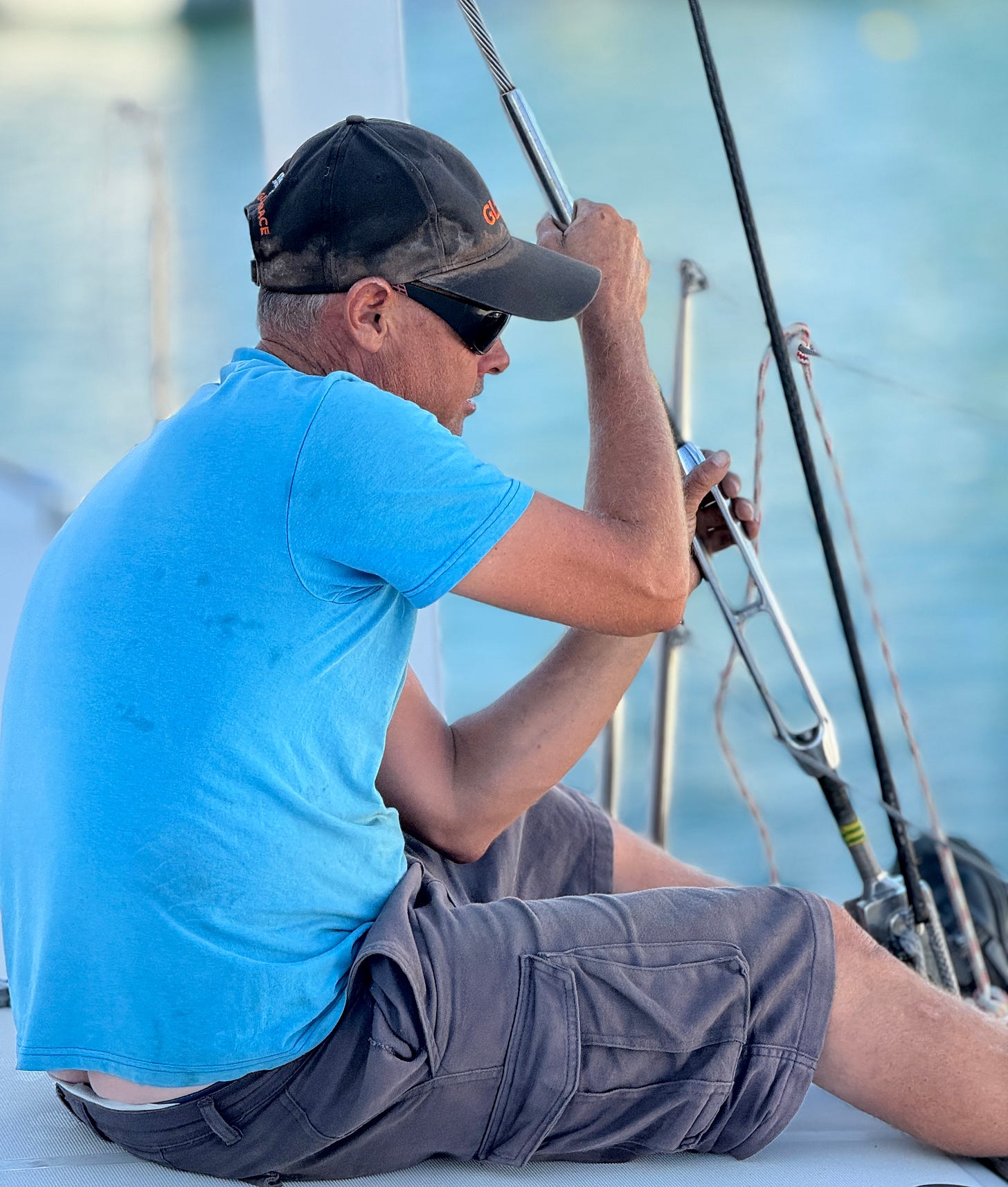
Our trip to Auckland gave us a chance to rent a car and drive around the North Island, visiting boatyards and meeting project managers. We’re planning to haul the boat and get some work done once we arrive. New Zealand is one of the best places in the world for boat work. The country has a strong yachting culture with excellent trades and craftsmen at about 2/3 the price of the US. Parts and labor are tax-free for transient yachts. After two years and 10,000 ocean miles, Roam deserves a spa treatment and a spruce-up. She’ll get it in New Zealand.
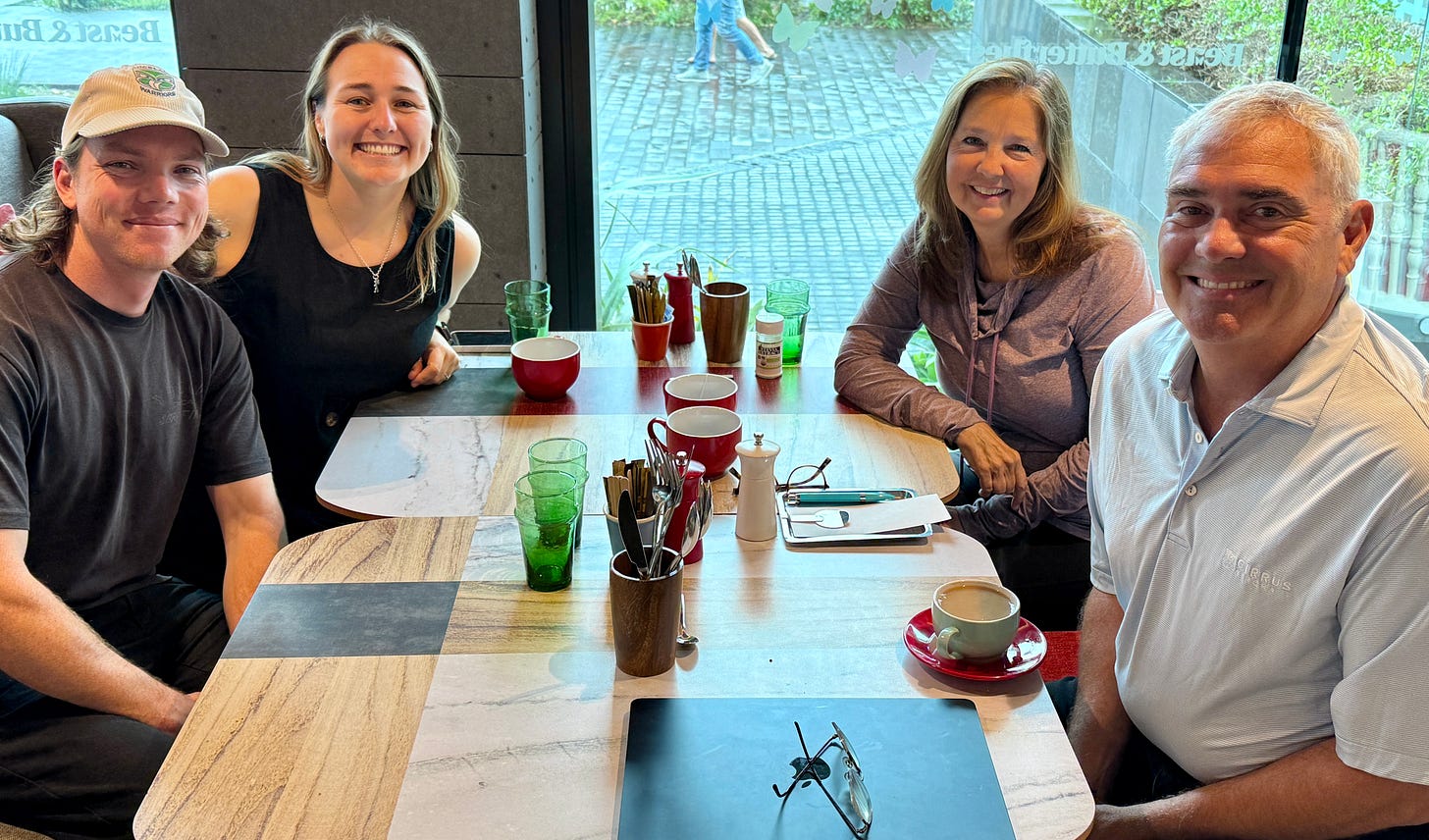
Visitors
The kids came to visit in August, and we sailed them around the Mamanuca and Yasawa island groups. We always look forward to having them. They don’t get much vacation time, and we are grateful they save some for us.
They got their introduction to scuba diving. Subsurface, the dive operation in Musket Cove, created three “discovery dives” for them on the nearby reefs. I went along as “assistant dive master” to the guide. They caught the scuba bug that I caught.
The reality TV show, Survivor, is filmed on Mana Island in the Mamanuca archipelago. Filming wrapped up in July, so we were able to anchor in the lagoon and hike around the island and find all the challenge sites. You can find these sites using Google Earth photos. During the production season, access to the island is strictly controlled. You can’t even go sailing by in the background.
We had a visit from our good friends Jim and Angela from California. They have rediscovered scuba diving, and we got in some great diving together in the Mamanuca and Yasawa islands. This is their third time aboard Roam. They first joined us in Mexico in 2023 before we left. Last year, they met us in the Tuamotu archipelago of French Polynesia. They mix a little resort time on either side of their stay with us on the boat.
We love having visitors. Time and location are the challenge. We always tell people, “You can pick the time or the place, but not both.” It requires a very flexible travel style.
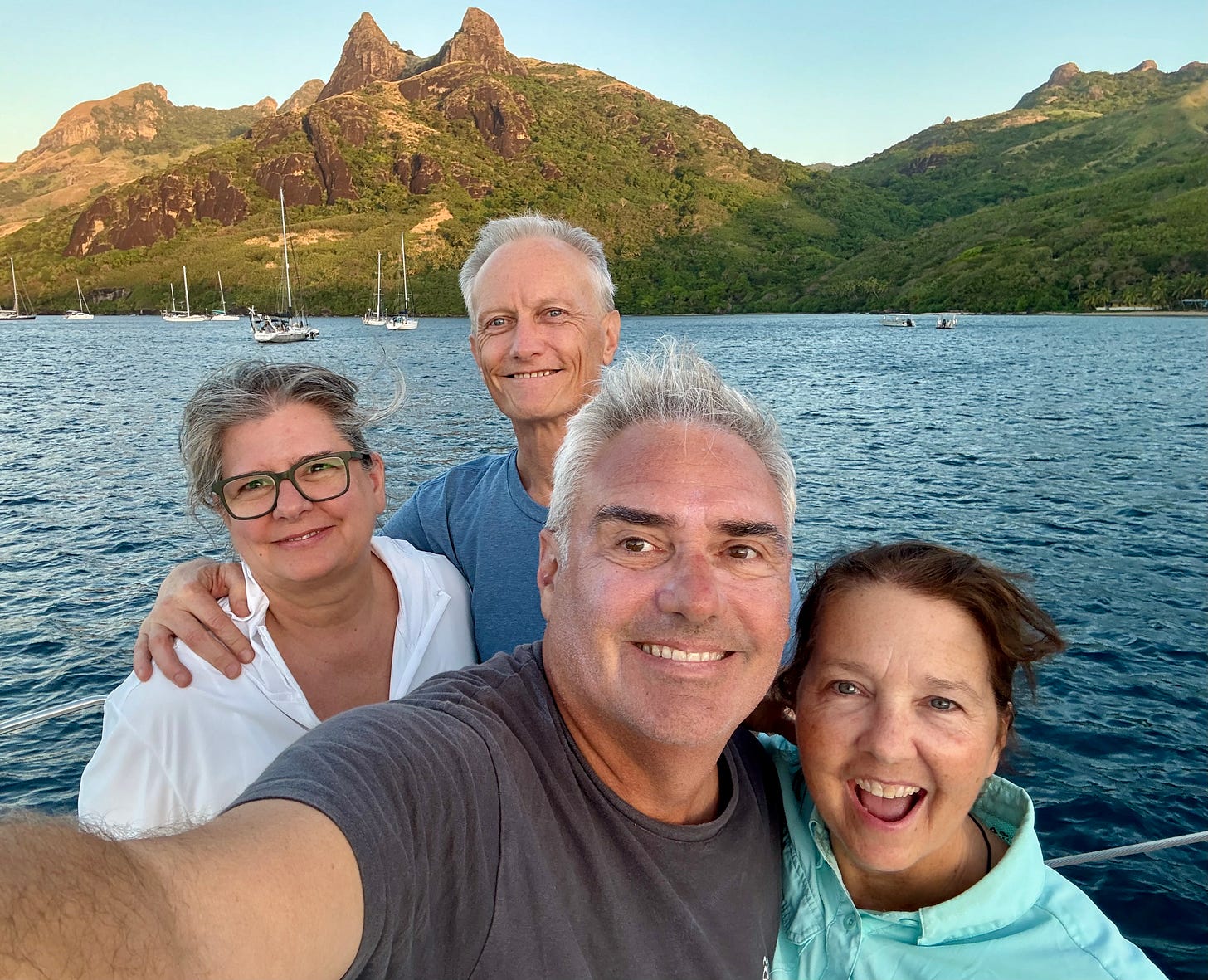
Since our September trip to New Zealand, we’ve been anchored out in the Mamanuca Islands—specifically Musket Cove. It is hard to imagine a better place for boat living in the tropics. Resorts and restaurants. Good dive shop. Ferry service to the mainland. Groceries. And, a short sail into remote islands when we want a change of scenery. We love it here.
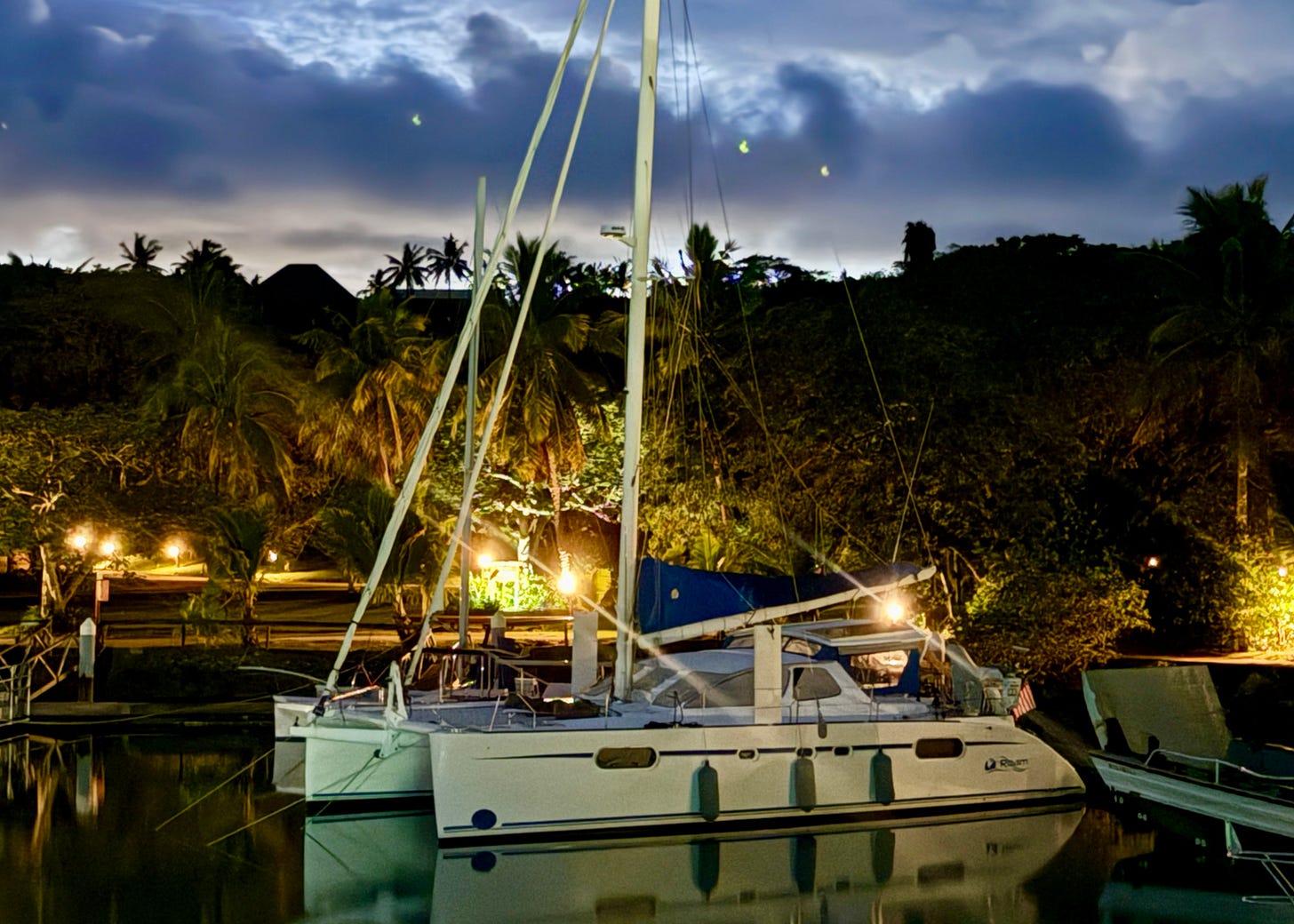
I am keenly aware of how fortunate we are to be here and experience all of this. We hope to return next year. Our crew will join us in May 2026 for the 1,000 nautical-mile passage back up to Fiji. I’ll be thinking of Fiji a little bit each day until then. I miss it already.
A Few Photos
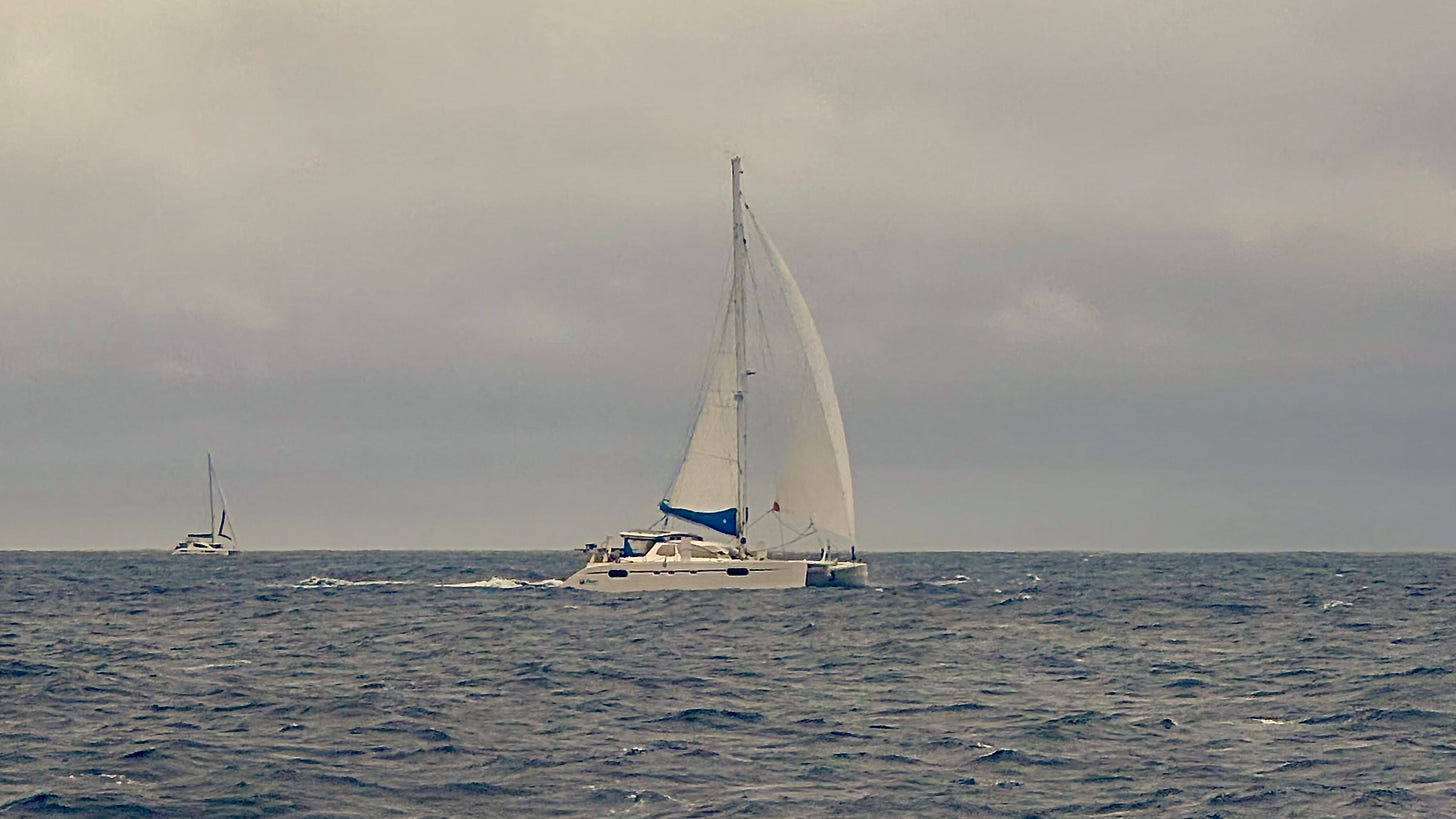
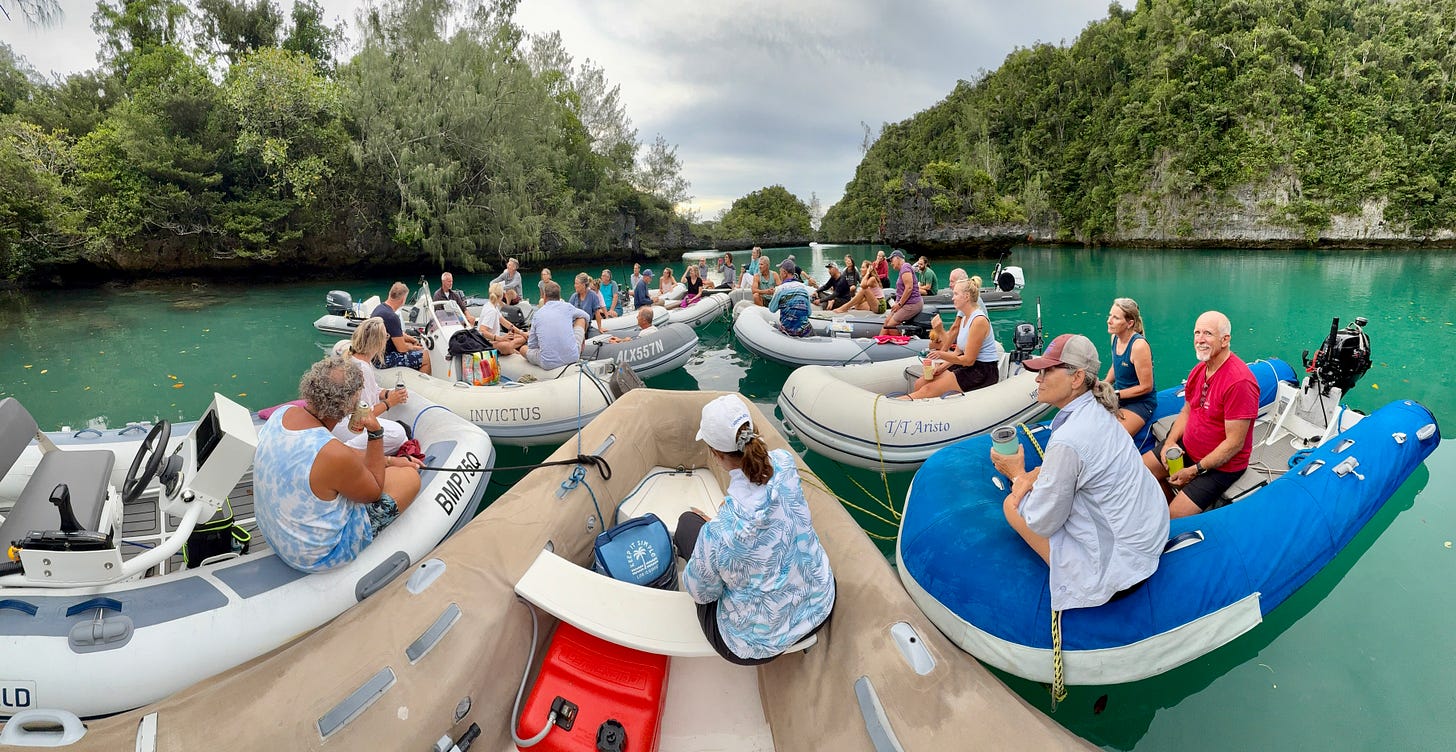
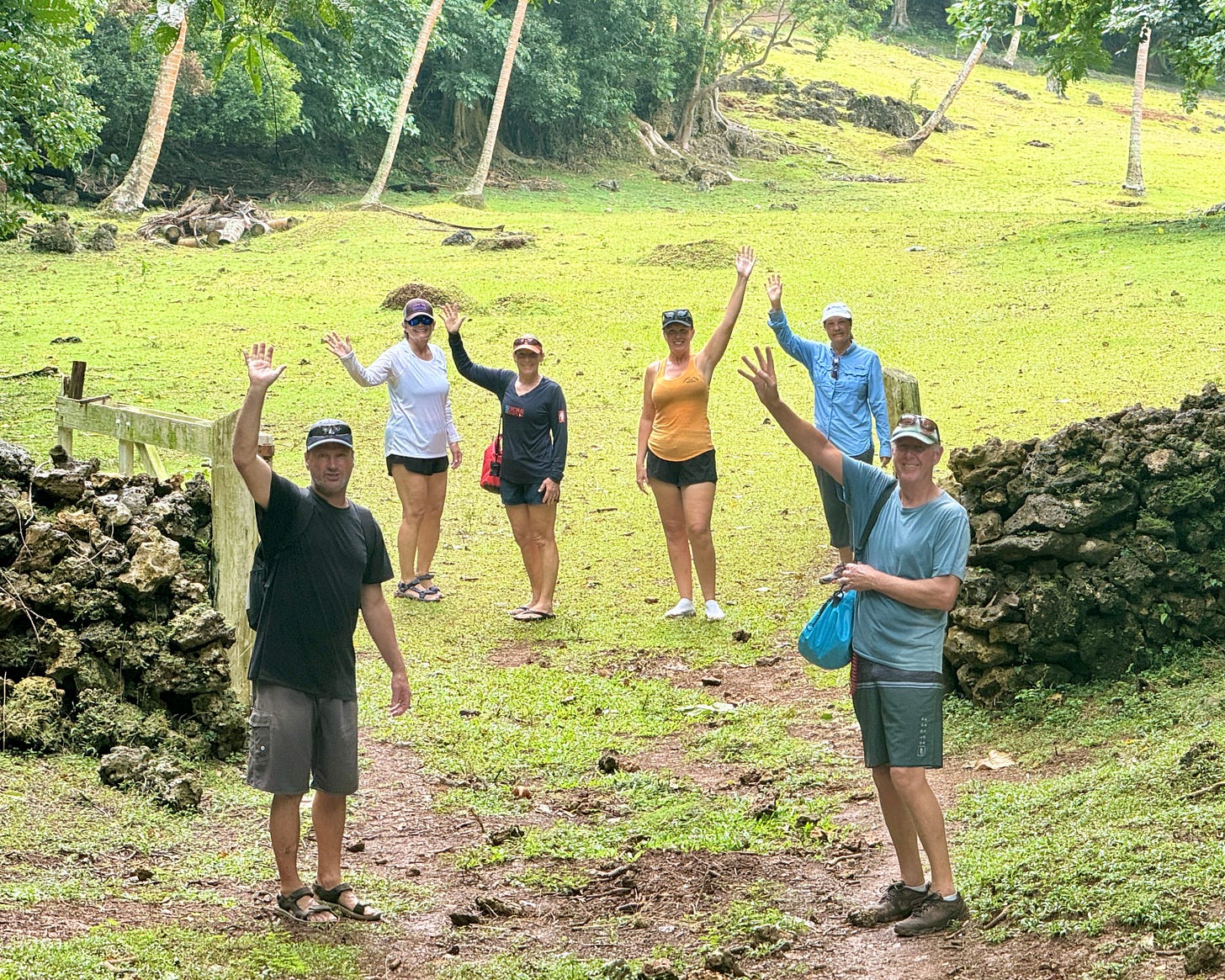
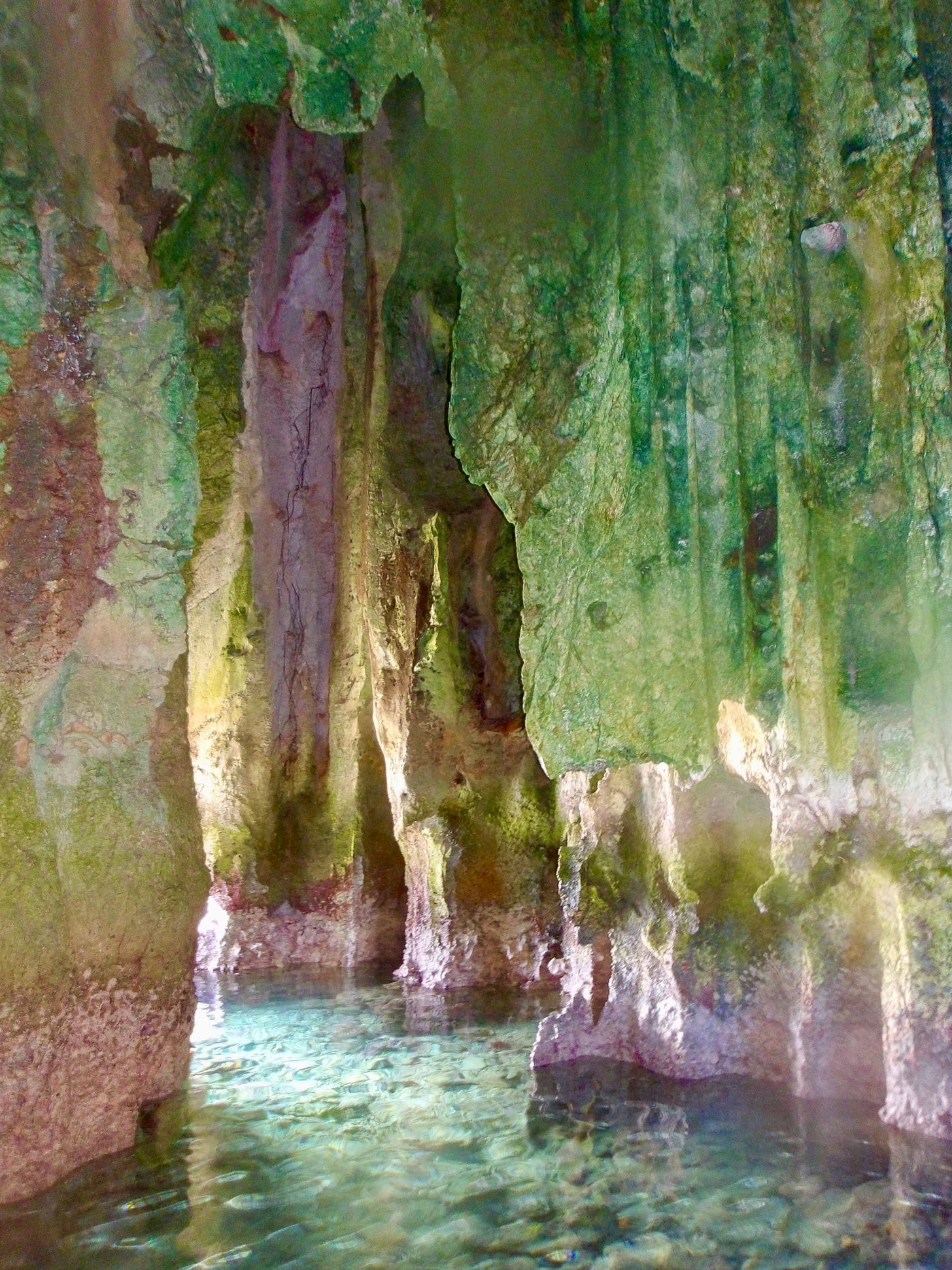
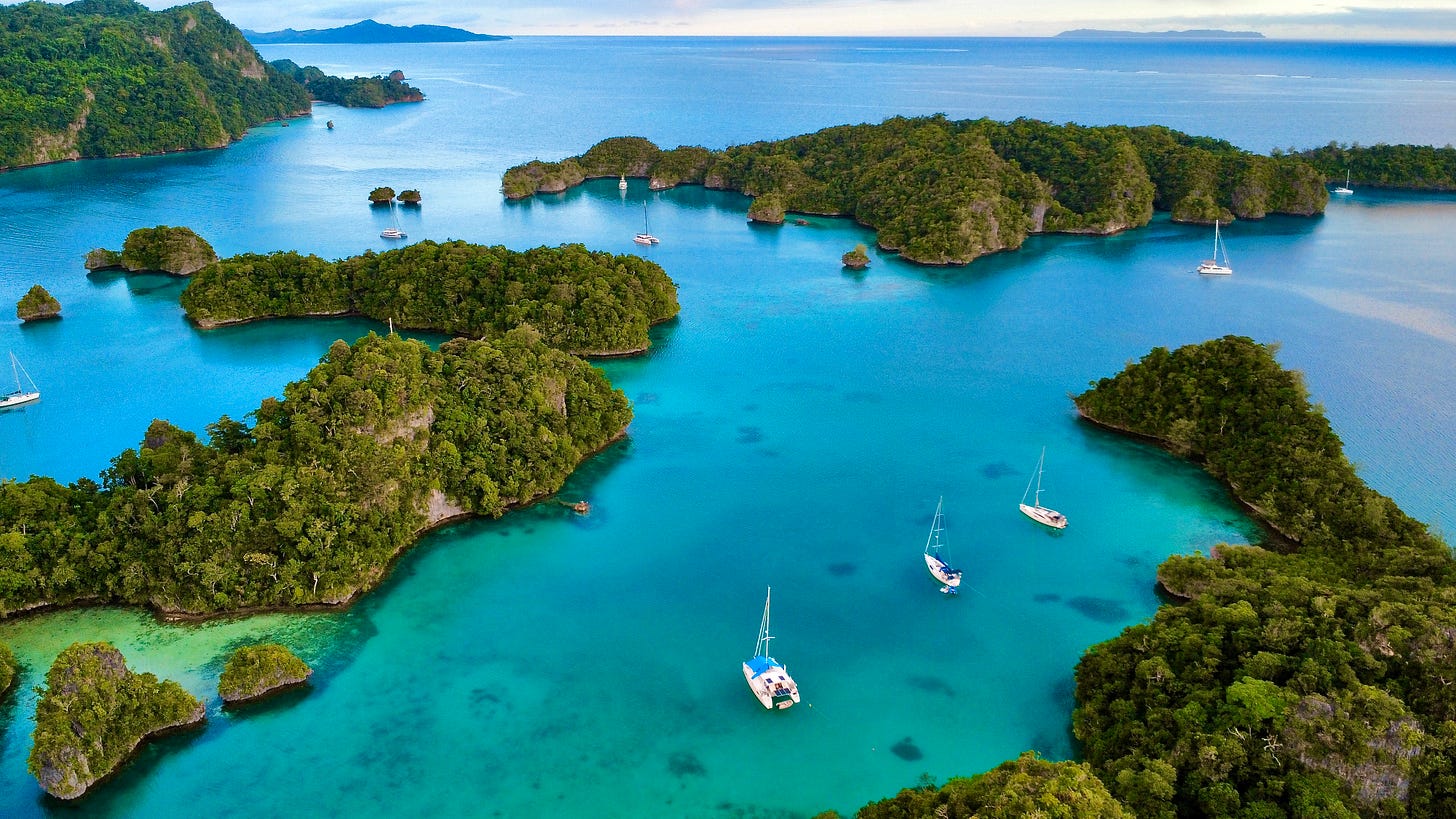
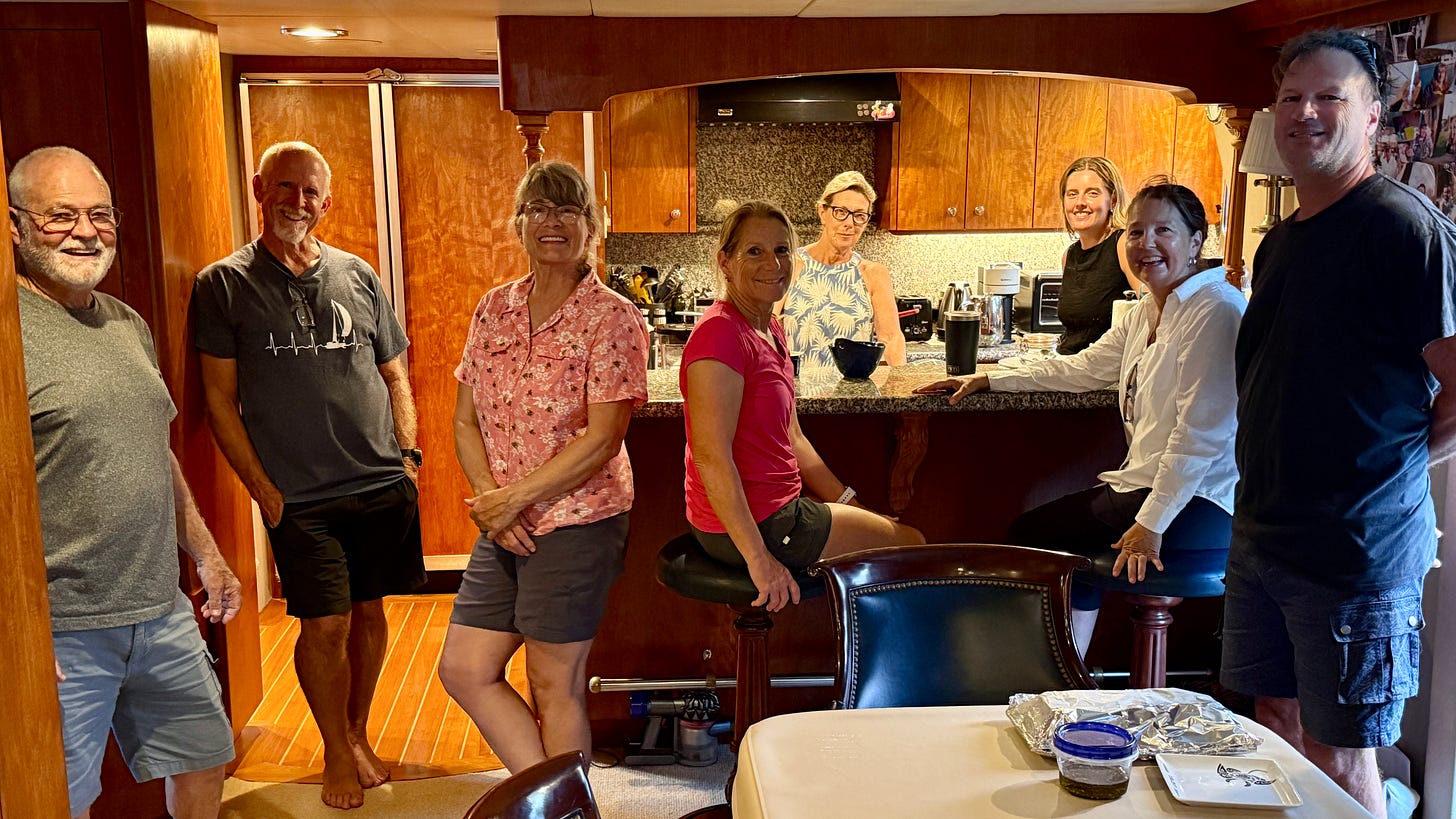
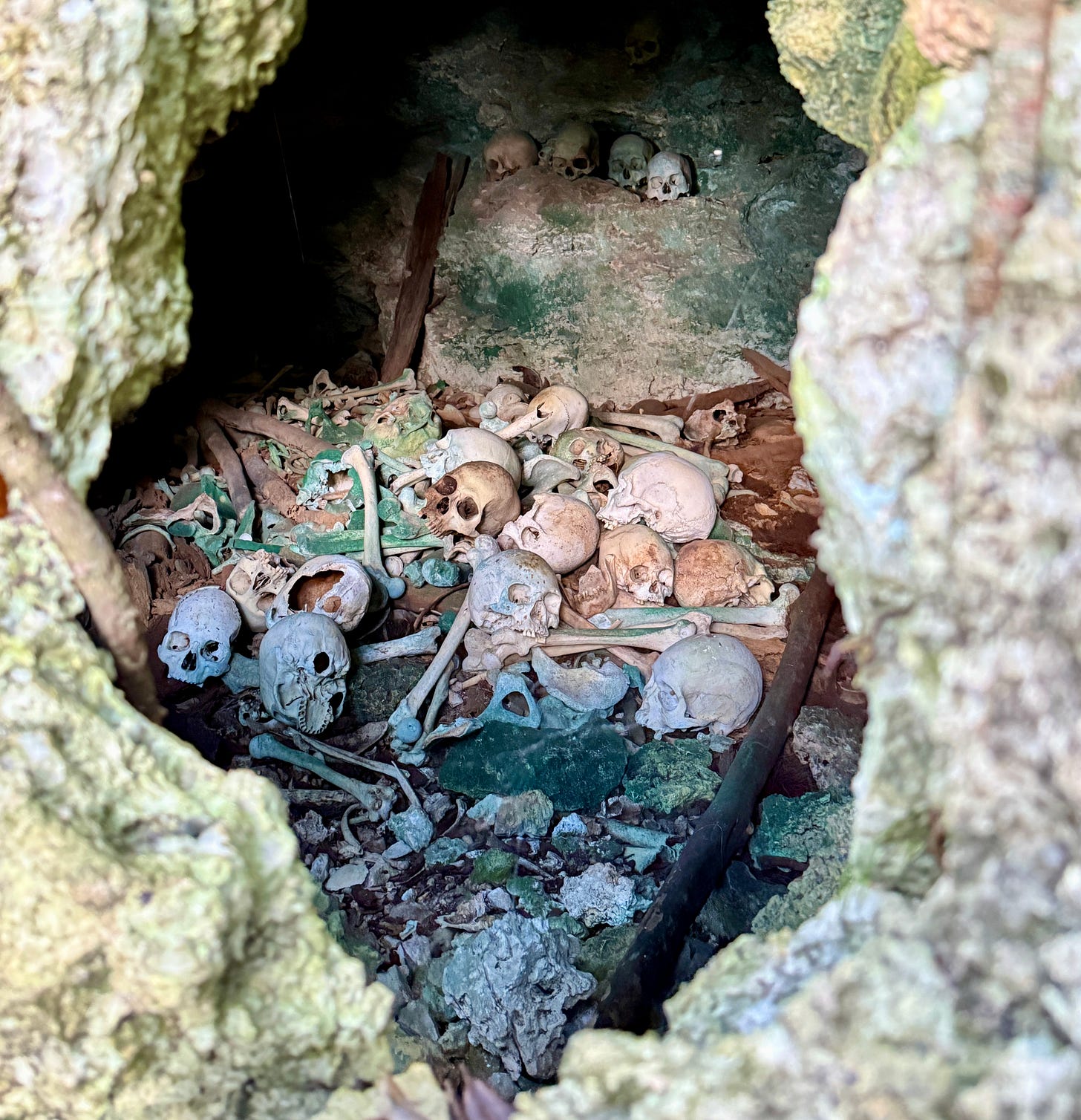
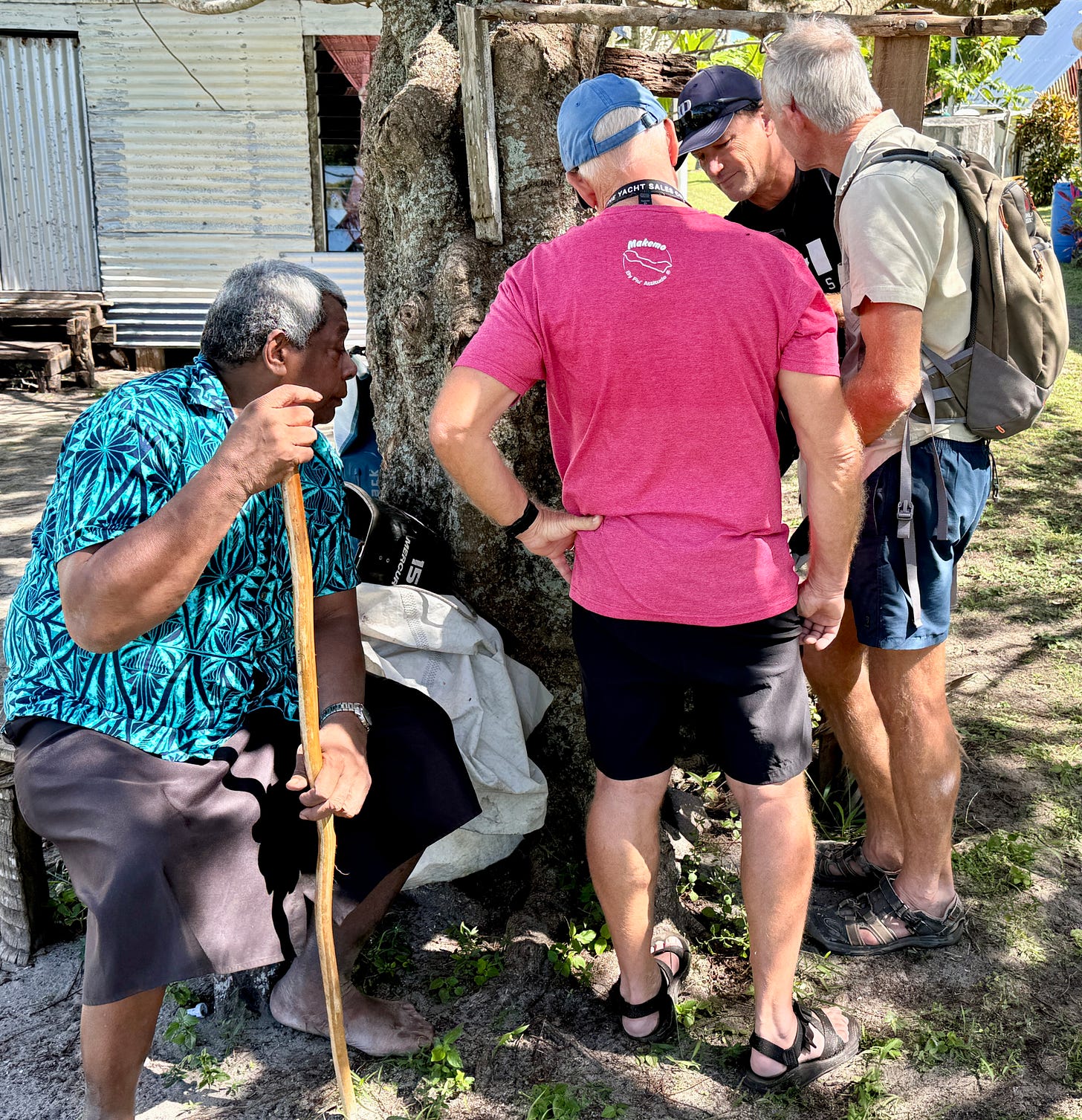
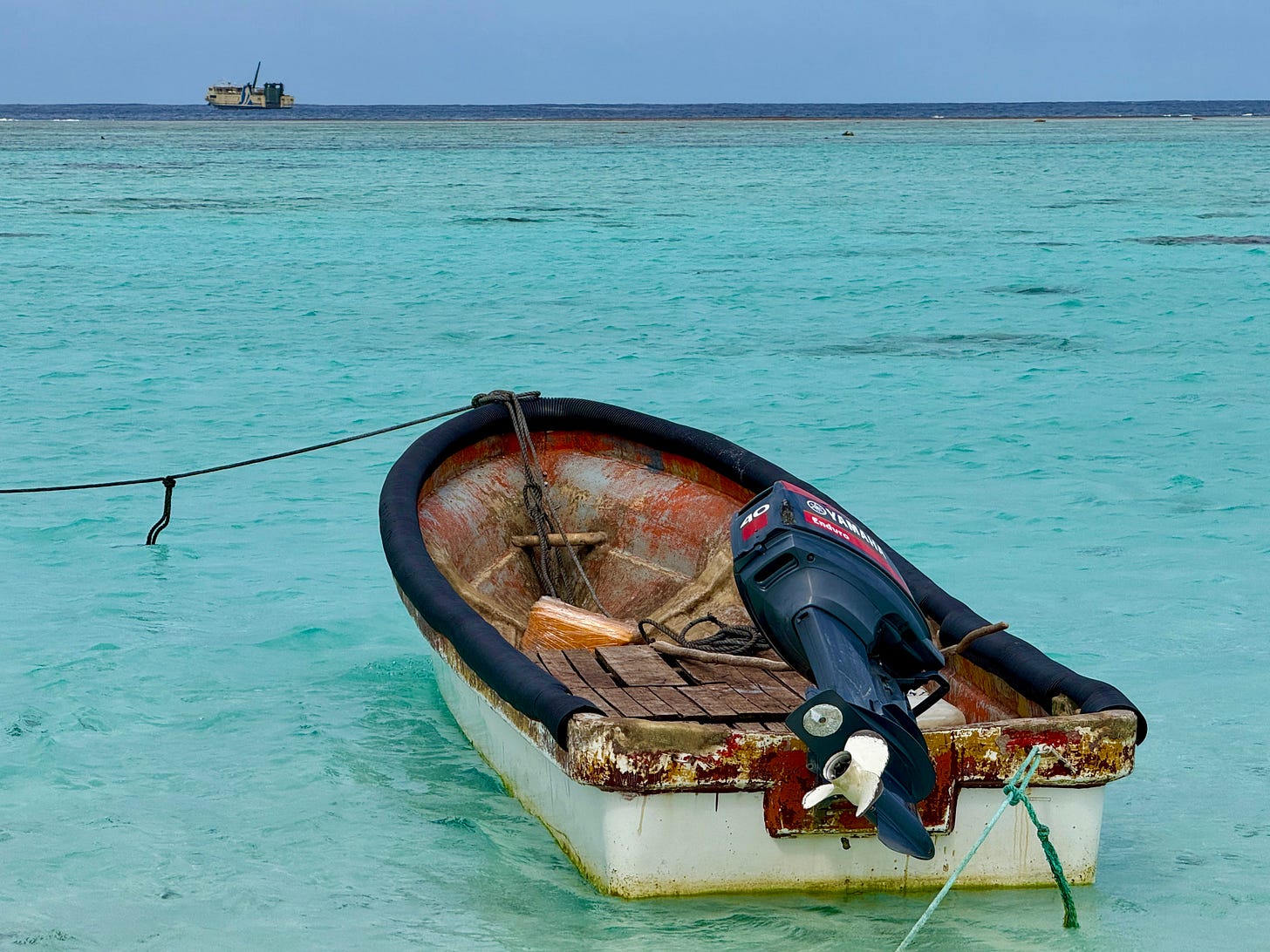
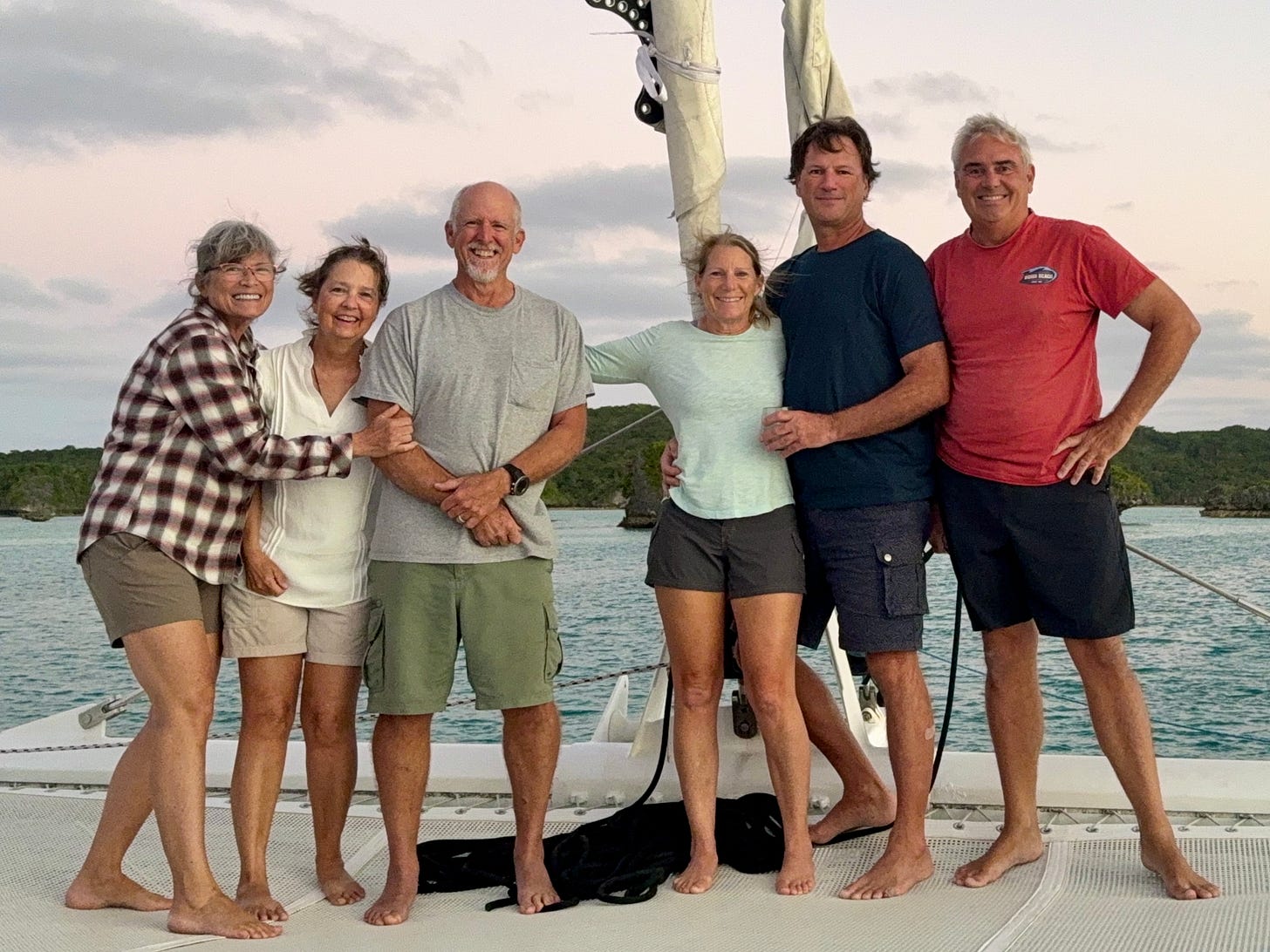
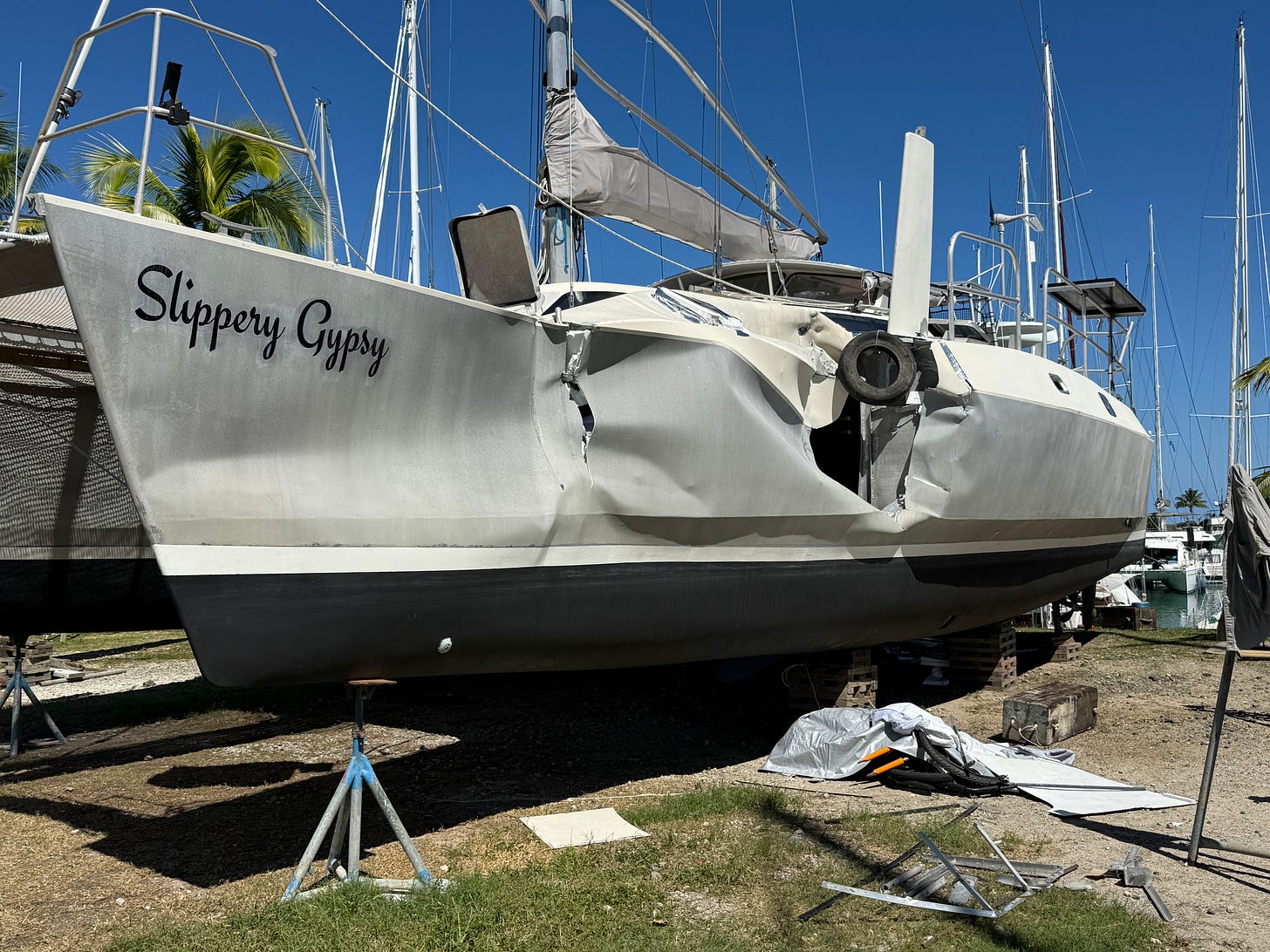
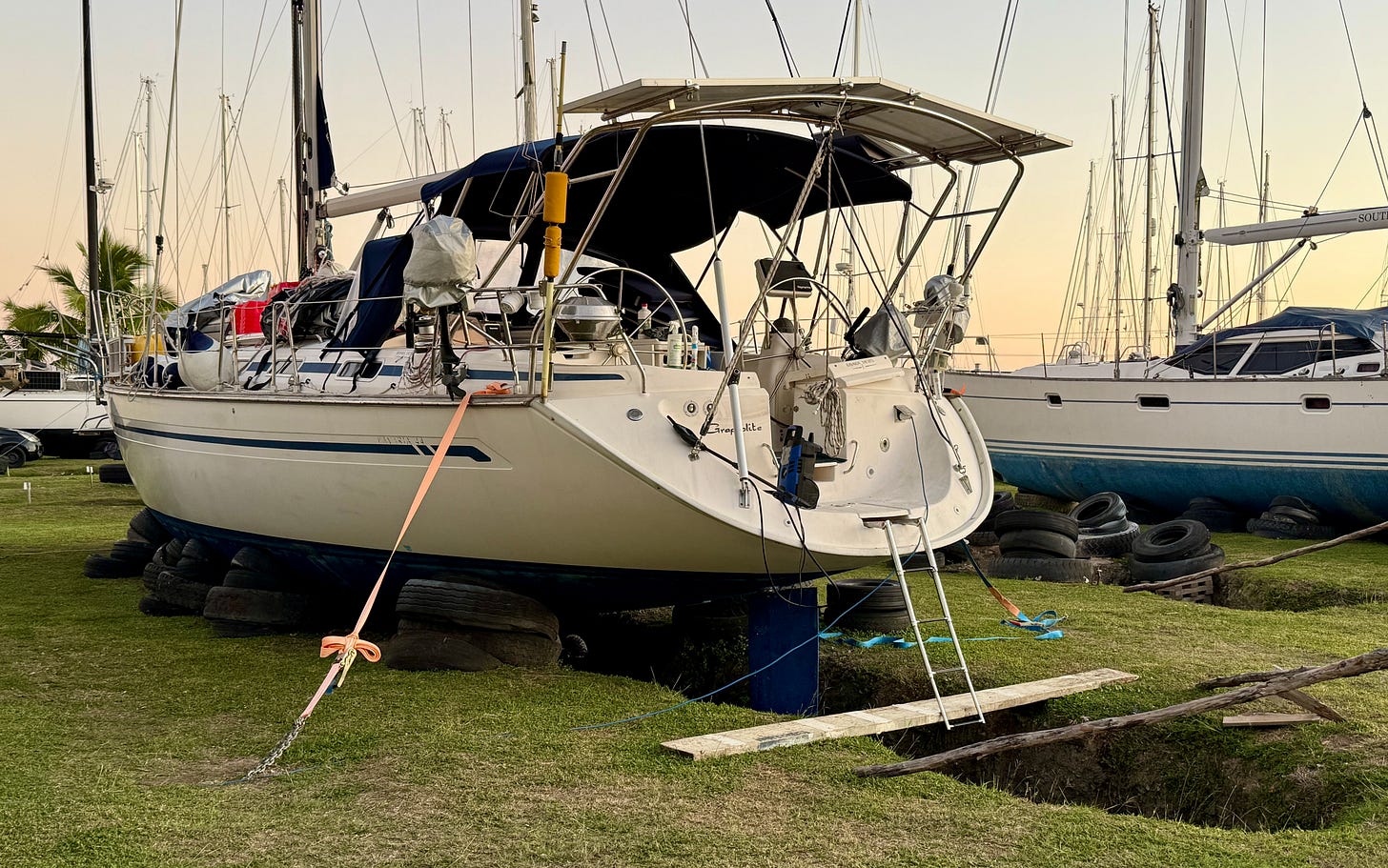
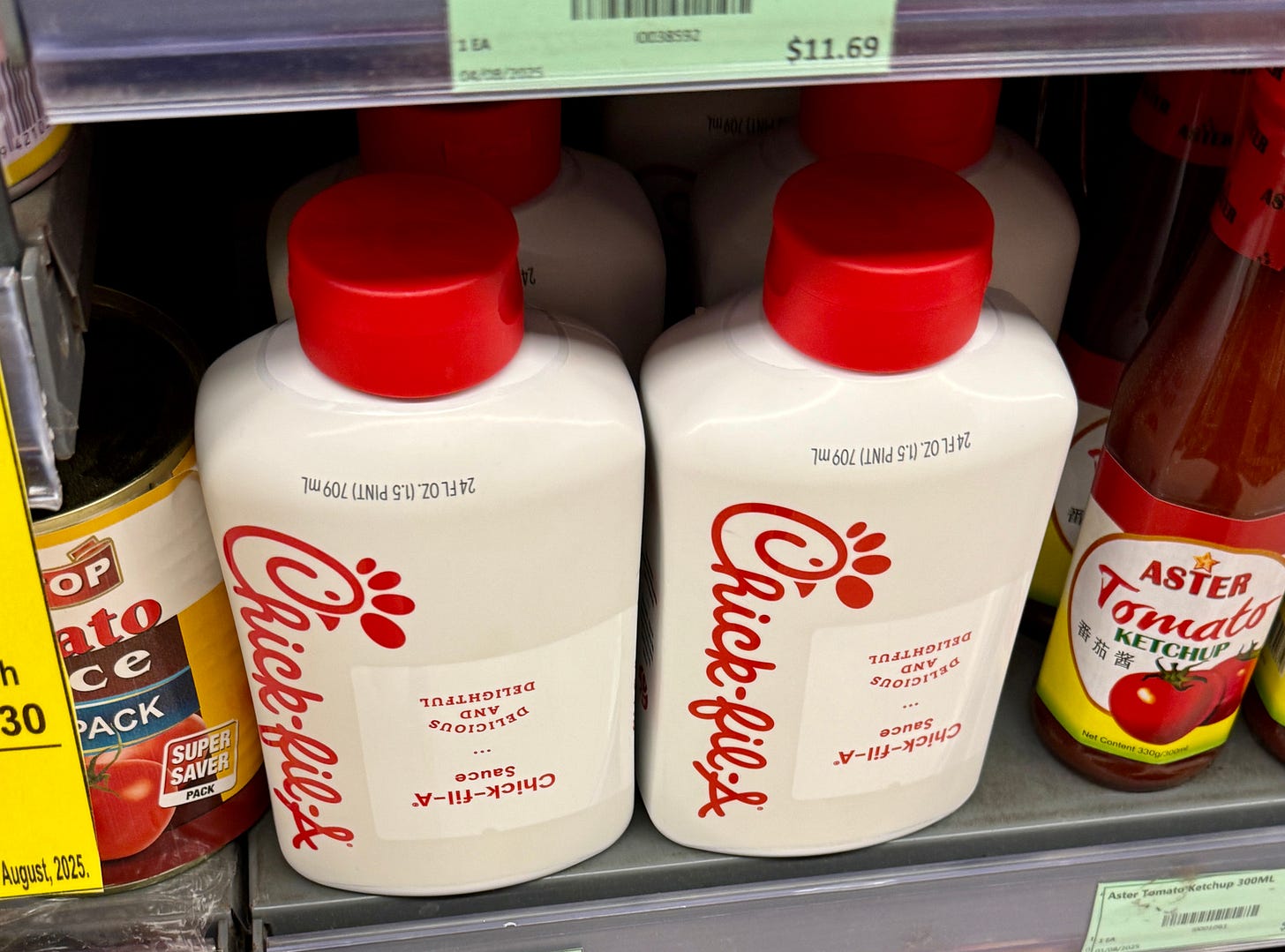
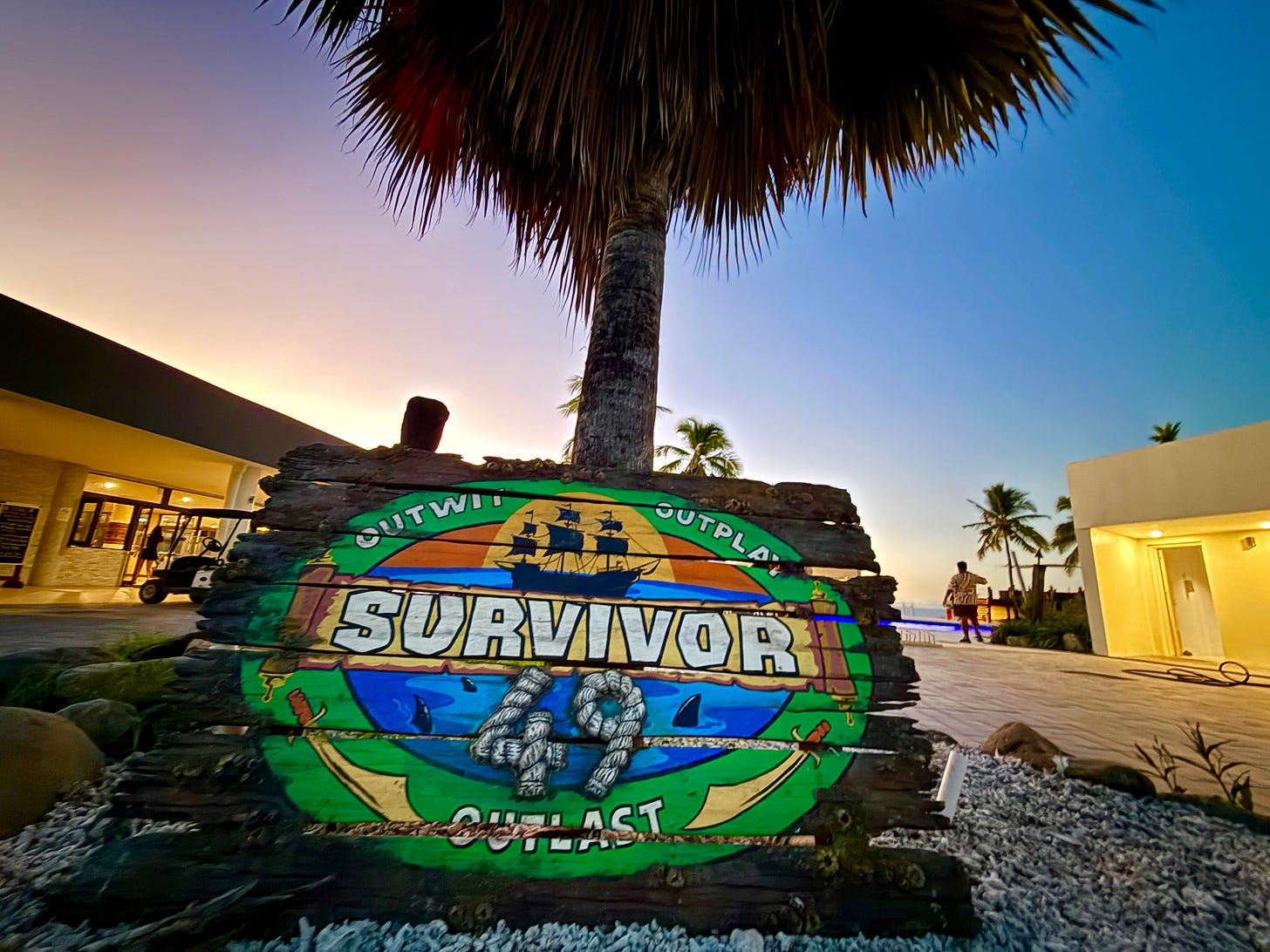
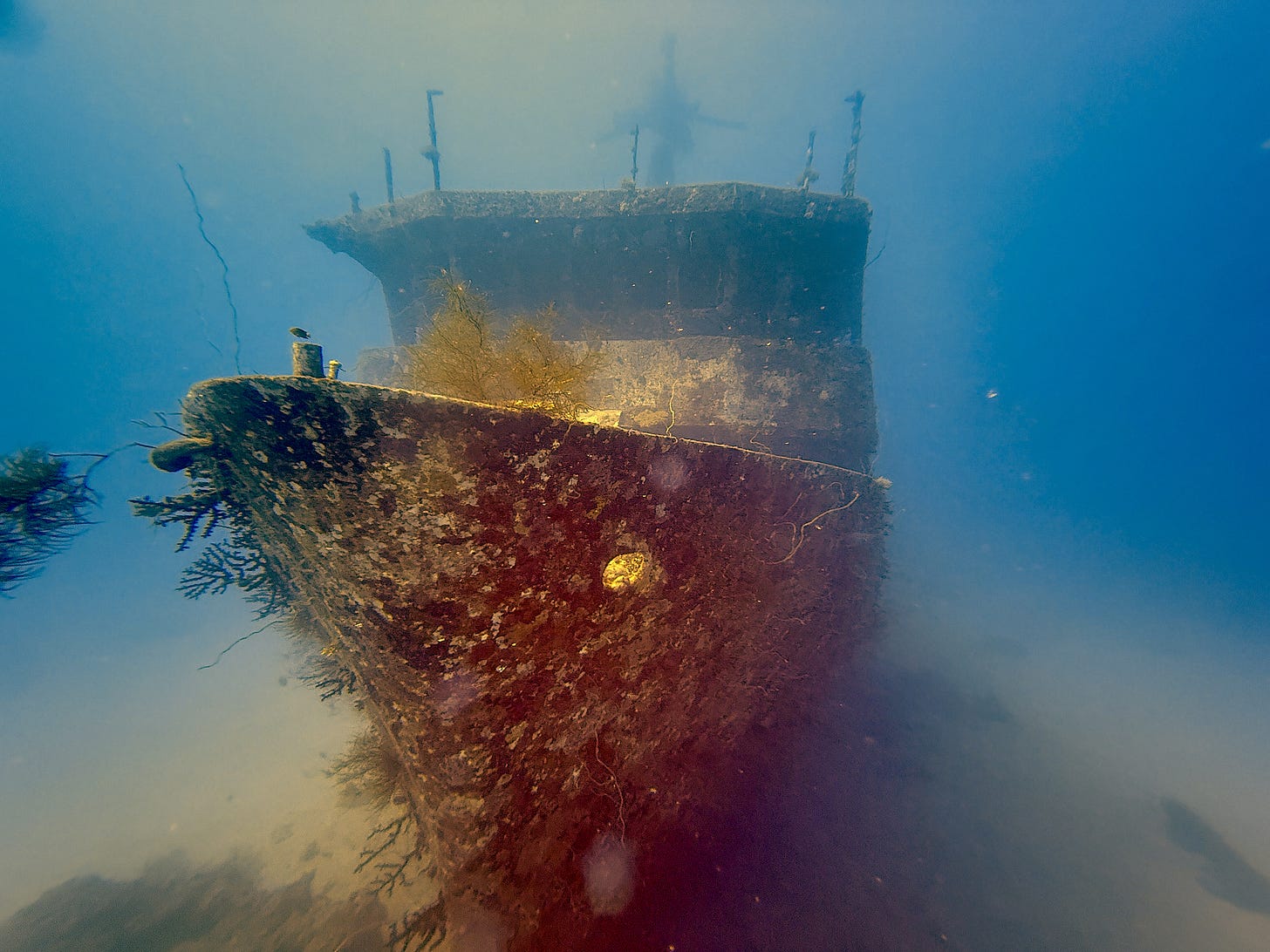
For a modern overview of Hedonic Adaptation, see Lyubomirsky, Sheldon, & Schkade (2005), who explored how people adapt to happiness-related circumstances over time. Lyubomirsky, S., Sheldon, K. M., & Schkade, D. (2005). Pursuing happiness: The architecture of sustainable change.Review of General Psychology, 9(2), 111–131.
https://doi.org/10.1037/1089-2680.9.2.111
“Yachtie” is an informal term for sailors traveling on transient boats. It’s a term the islanders use to describe us. You might think it’s either elitist or derogatory. It’s not. It’s just what they call us. At home only rich people have “yachts.” Out here, any boat that’s not a working vessel is a “yacht.”


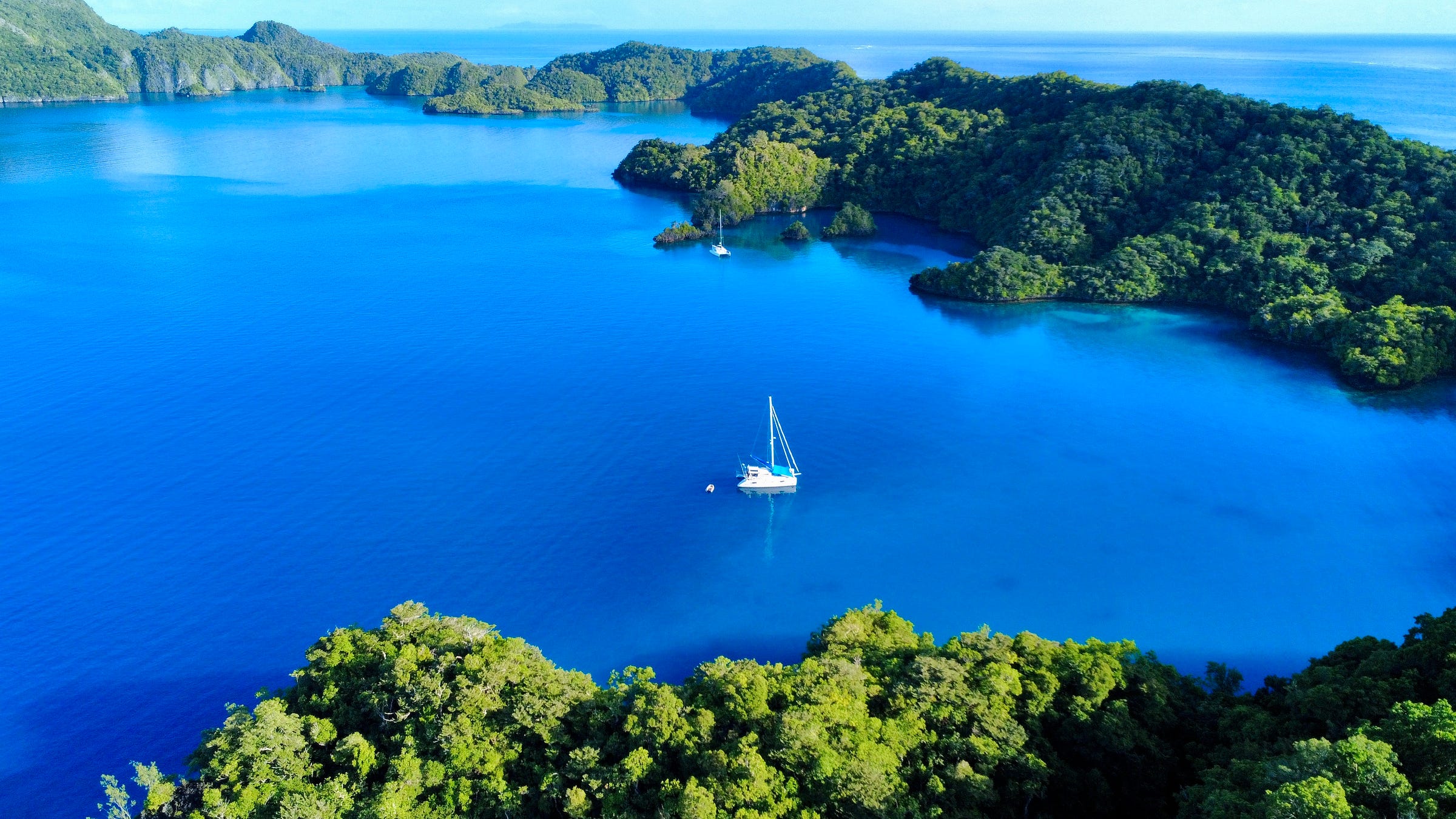
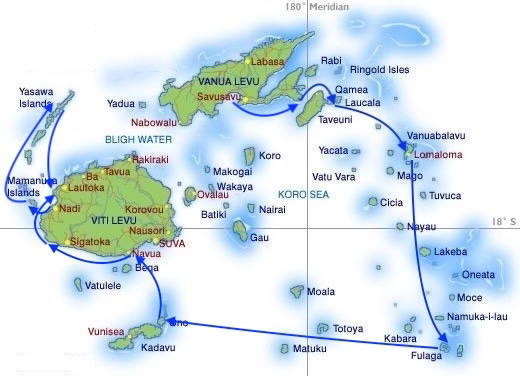
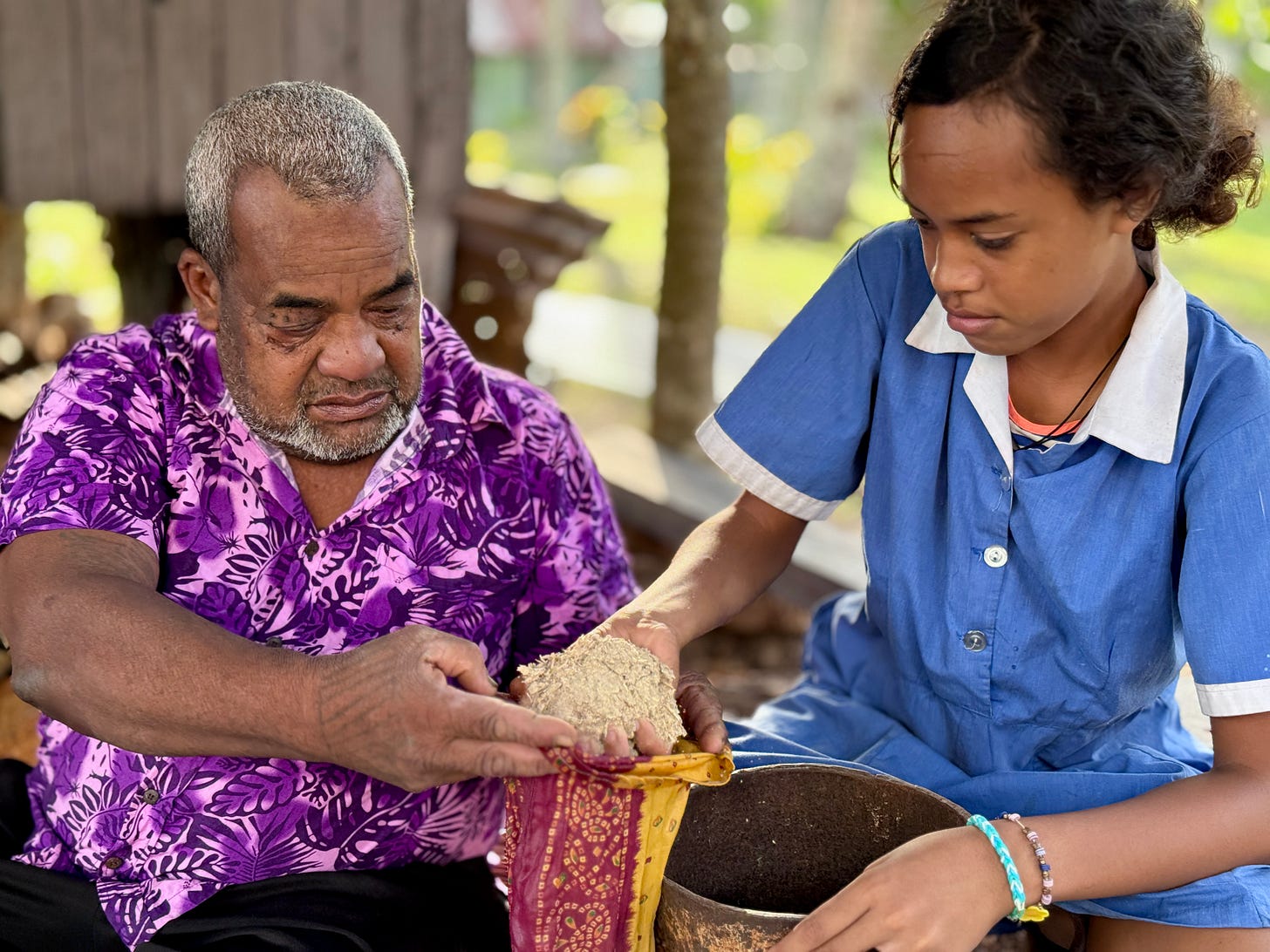
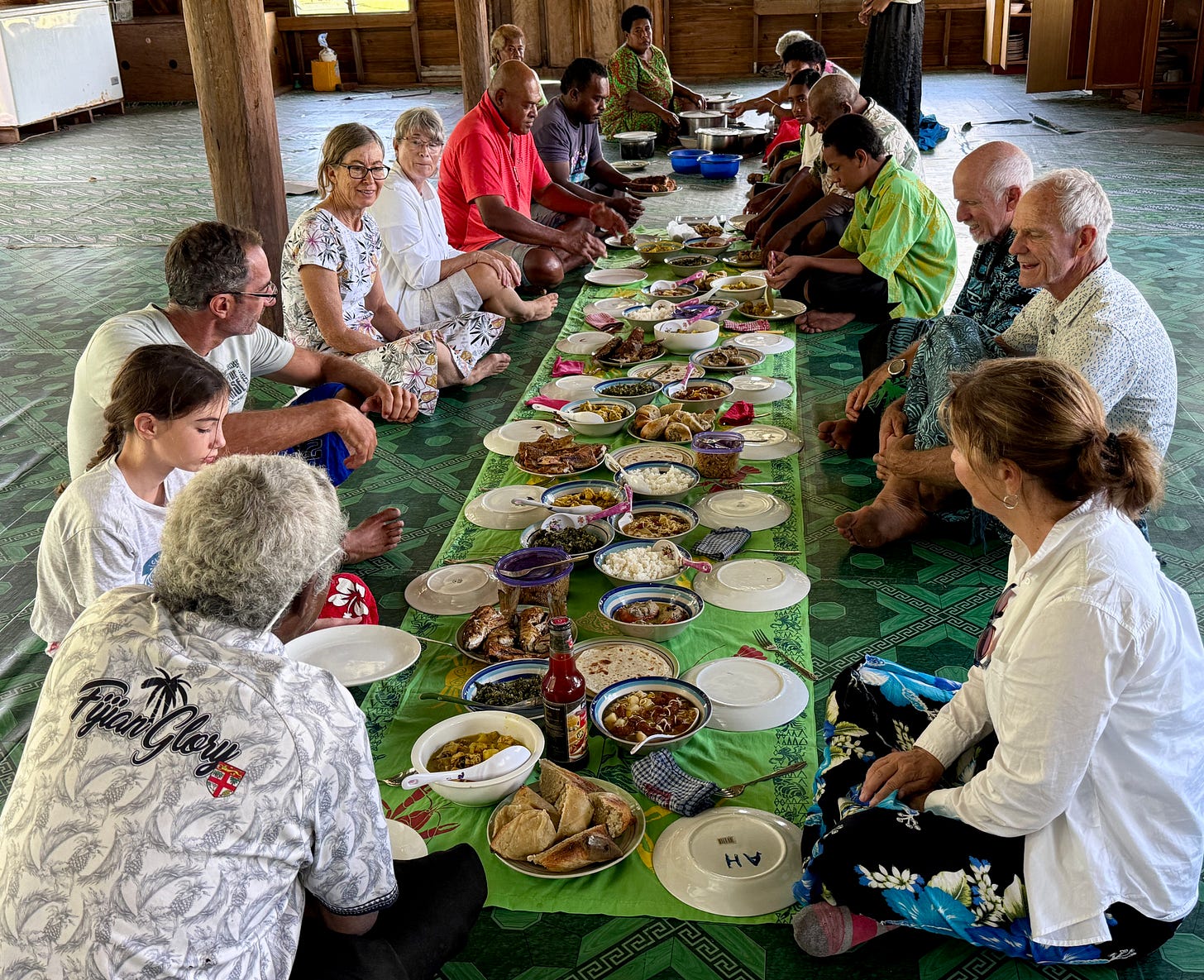
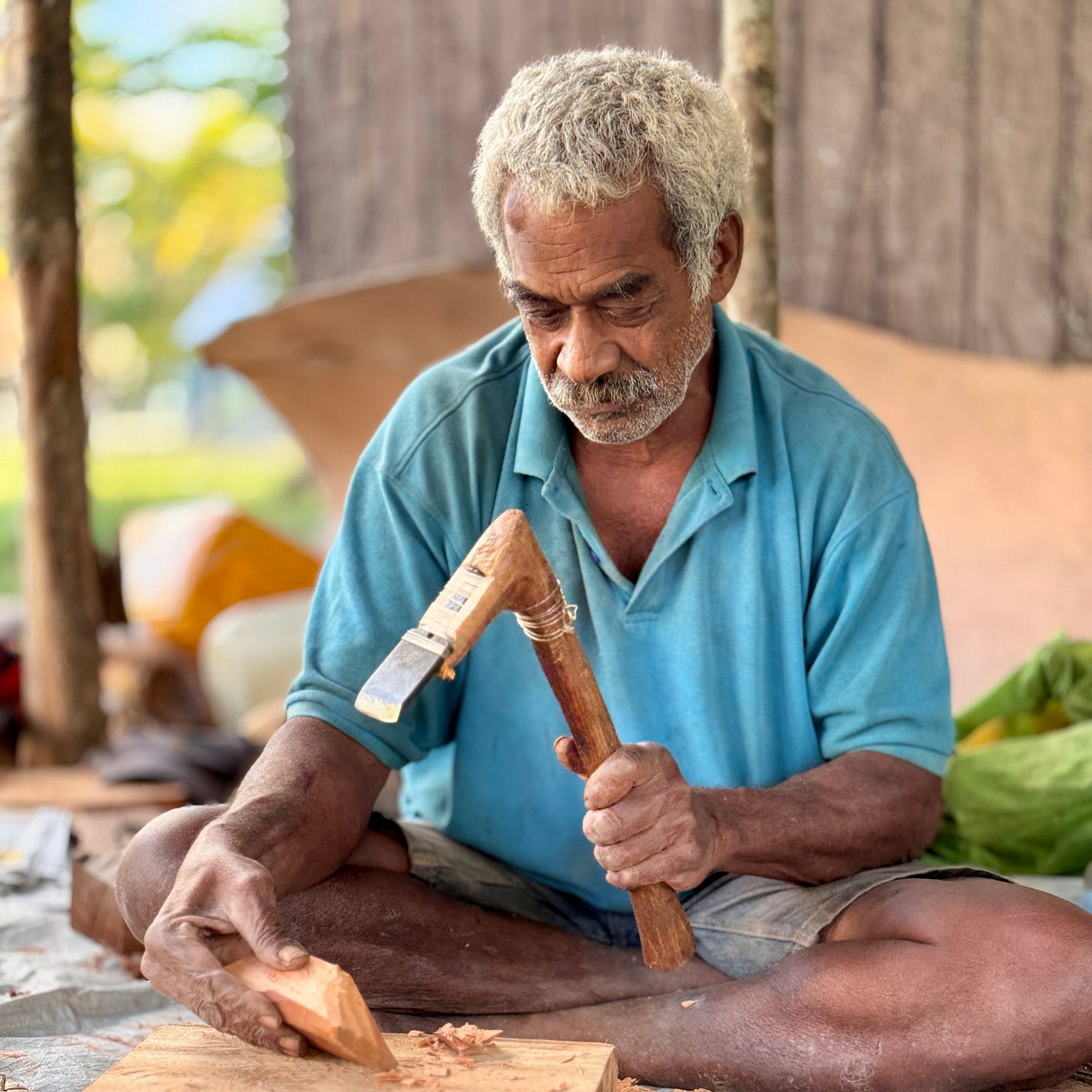
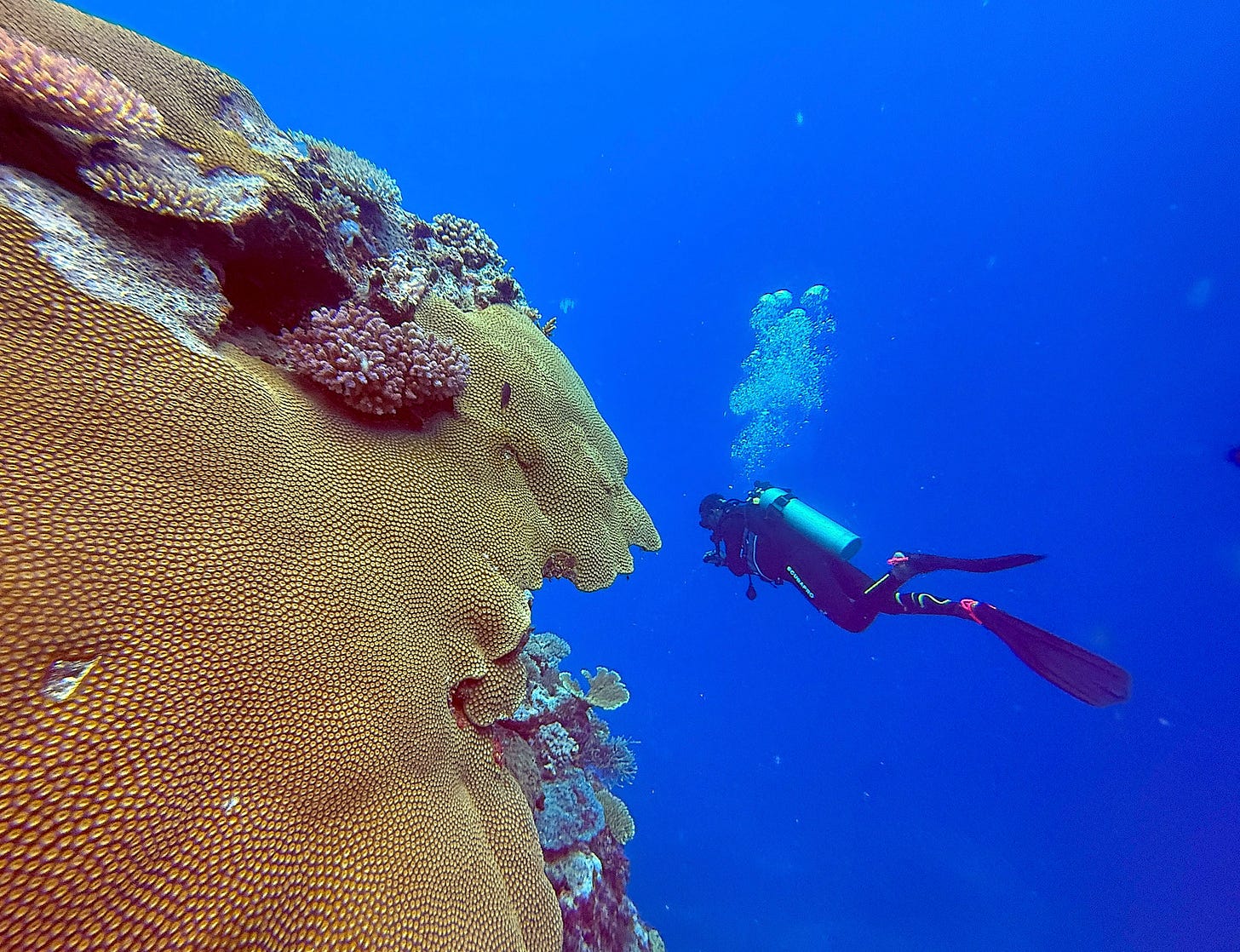
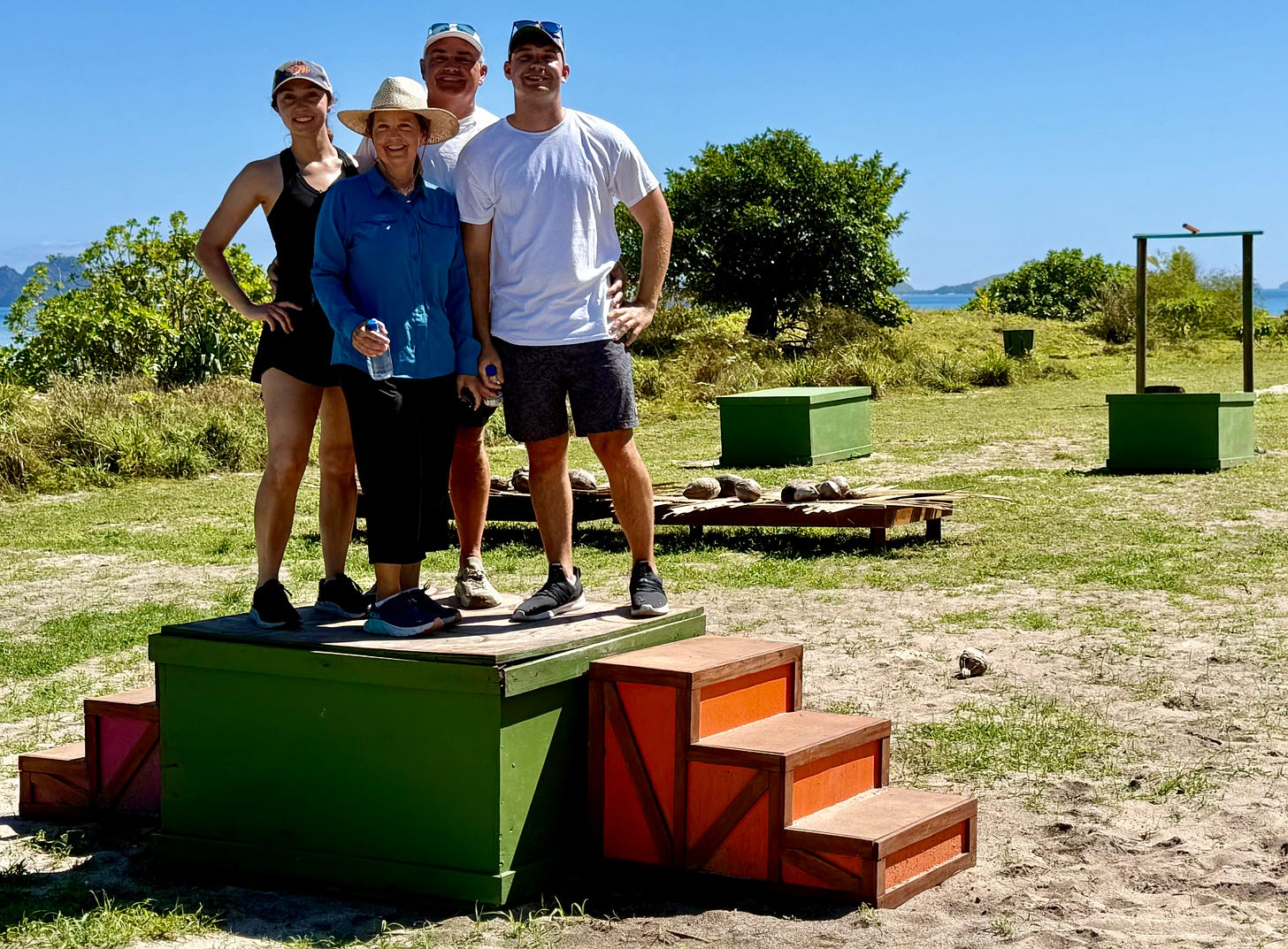
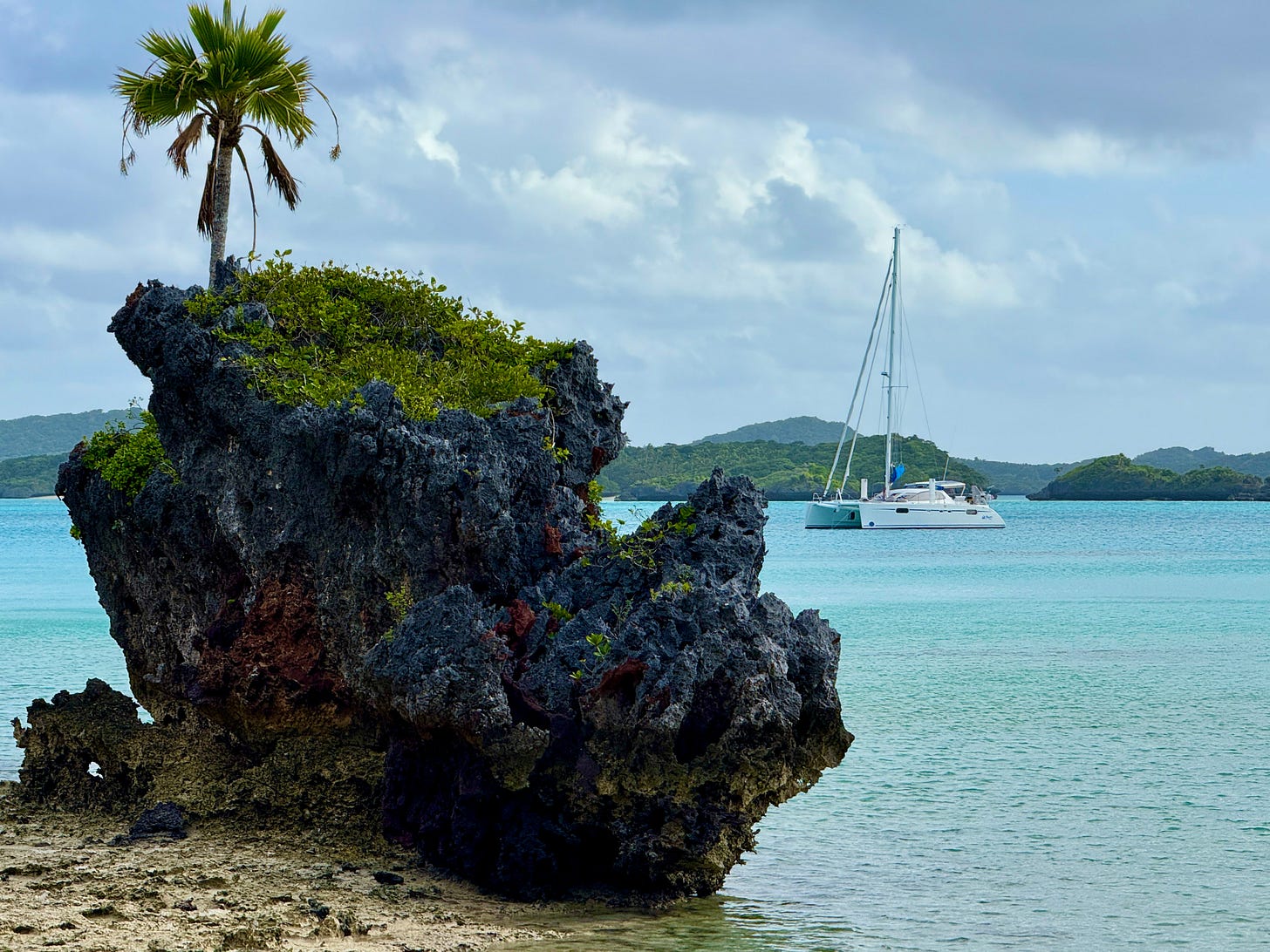
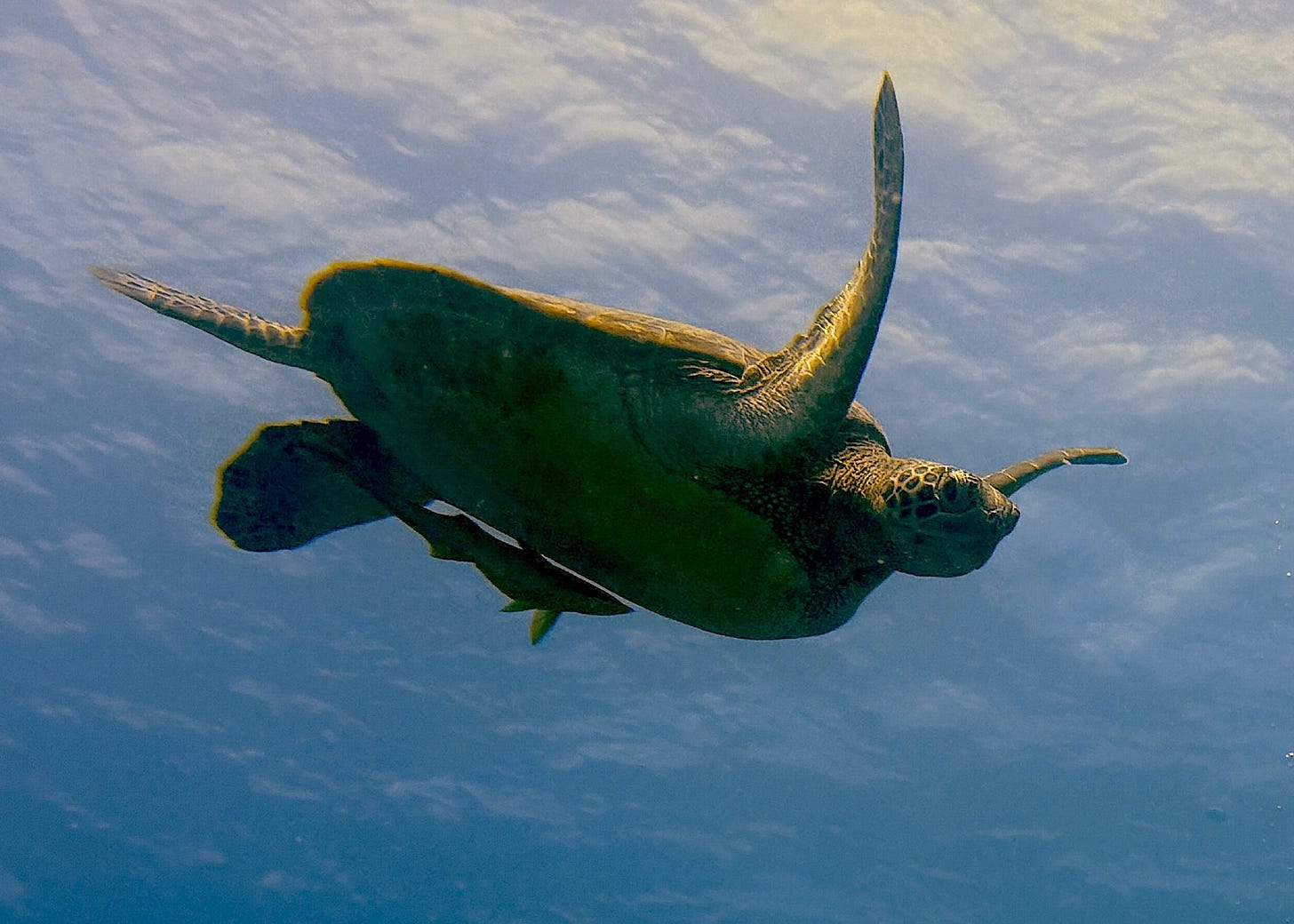
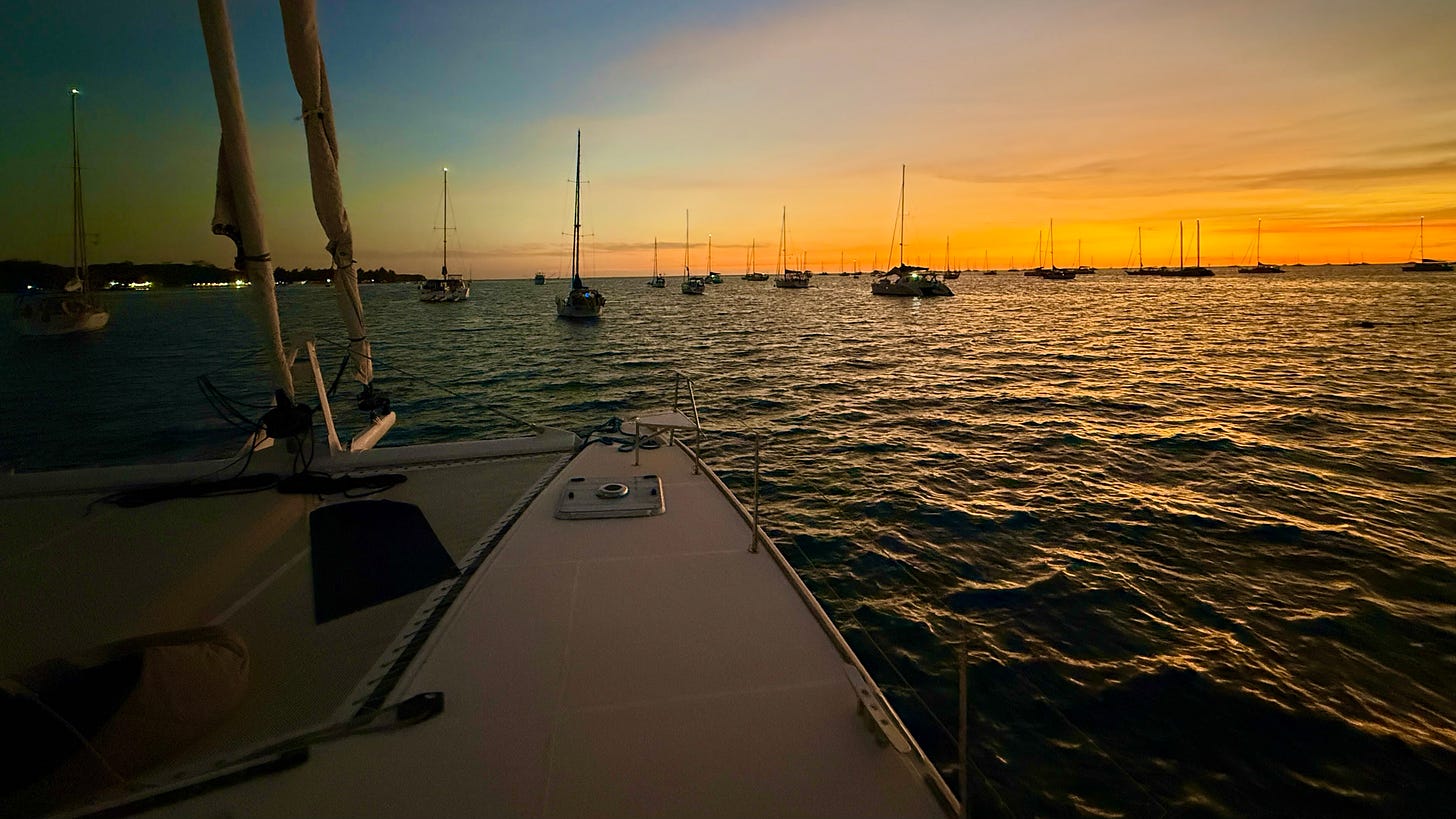
I love your blog posts! Fun to read and I always get something useful foo.
Fiji sounds fabulous! We're enjoying our time in French Polynesia, and it's such fun to think about more amazing spots ahead of us. Thanks for sharing.